Read more of this story at Slashdot.
Ronald.phillips
Shared posts
Microsoft Set To Change Print Screen Button So It Opens Snipping Tool in Windows 11
Flying this weekend? This $6 USB condom will protect your data from suspicious outlets
Guidance for investigating attacks using CVE-2022-21894: The BlackLotus campaign
This guide provides steps that organizations can take to assess whether users have been targeted or compromised by threat actors exploiting CVE-2022-21894 via a Unified Extensible Firmware Interface (UEFI) bootkit called BlackLotus.
The post Guidance for investigating attacks using CVE-2022-21894: The BlackLotus campaign appeared first on Microsoft Security Blog.
Windows Defender Finally Squashes Firefox Bug That Ate CPUs For 5 Years
Read more of this story at Slashdot.
Potential Outcomes of the US National Cybersecurity Strategy
The national strategy outlined by the Federal Government on March 1, 2023, is a monumental attempt to weave a consistent approach to cybersecurity for the whole nation.
The post Potential Outcomes of the US National Cybersecurity Strategy appeared first on SecurityWeek.
Hollywood's Voice Actors Sound Off About The Perils And Possibilities Of Artificial Intelligence
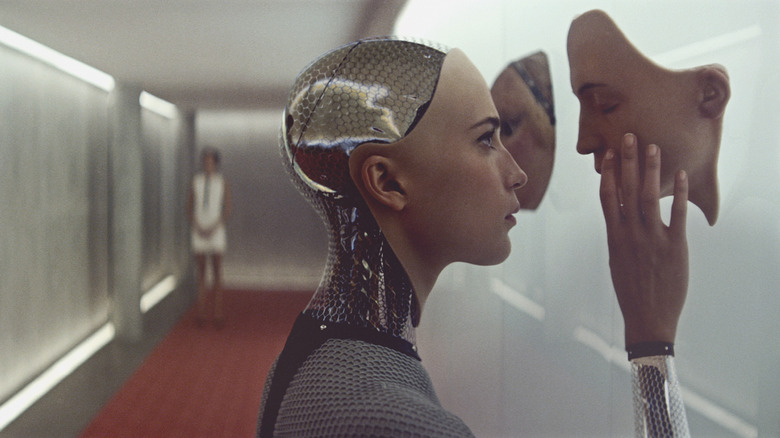
In 2021, director Morgan Neville made headlines when he revealed that he and his team had built an AI model of the late Anthony Bourdain's voice for his documentary "Roadrunner," and Neville had secretly slipped AI-generated narration into the doc alongside narrations that Bourdain himself actually read aloud. In this case, the AI narrations were for lines the acclaimed chef and television personality had written in books or articles but never physically recorded ("We were merely trying to articulate things he had already said," Neville explained), but controversy swirled about the ethics of that decision.
In 2022, actor James Earl Jones, who has provided the voice of Darth Vader since the original "Star Wars" in 1977, made his own headlines when he allowed a start-up company called Respeecher to use artificial intelligence to generate new vocal performances using his early archival recordings as source material, letting Lucasfilm retain a consistency to Darth Vader's iconic intonations instead of recasting the role. Jones, now 92 years old, reportedly provides guidance and advice to the teams working to keep Darth Vader at the forefront of pop culture. After 45 years of existence, Darth Vader has become a more synthesized combination of man and machine than ever before.
Over the past nine months, artificial intelligence has exploded back into mainstream conversation, with AI art generators (or, more accurately, art stealers) like Lensa sweeping across Instagram and generative AI tools like ChatGPT taking the idea of chat bots to the next level. But the James Earl Jones news raised questions about what impacts AI might have on the voiceover community as a whole. If archival recordings can now be fed into a computer that can create brand new line readings, have we entered the final days of human artists being paid to do voice work for studios and production companies?
/Film spoke with some of the biggest and most prolific voice actors in the country to try to answer that question.
How The Technology Works
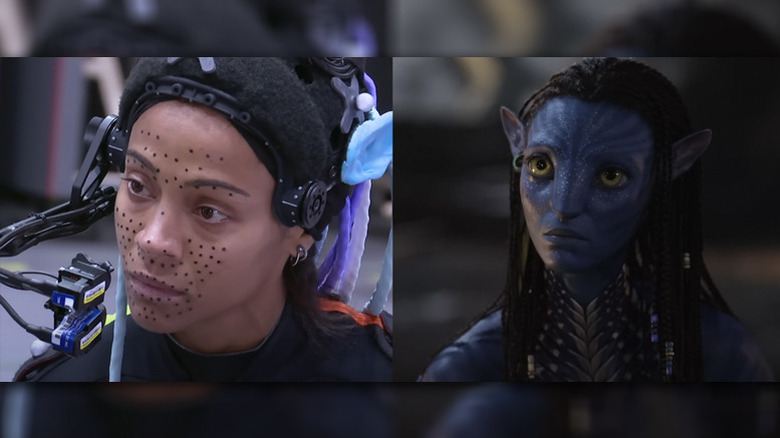
You've likely seen split-screen videos of actors wearing motion capture suits performing on a soundstage alongside the fully rendered image which appears in the final product. This AI technology for voiceovers works in a similar manner, only with audio.
"They'll hire an actor to basically be a puppeteer for the James Earl Jones voice," explains Keythe Farley, an actor and voiceover director who has credits on the Mass Effect games, "Adventure Time," and Cyberpunk 2077. "So the actor's performance will then get 'skinned' by James Earl Jones' [AI-generated voice]." And it's not just celebrities who provide those "skins," or customized voices that are overlaid onto a baseline performance.
Abigail Savage has appeared on shows like "Orange is the New Black" and "What We Do in the Shadows." She's uniquely positioned to talk about this technology, because she's not only an actor, but she's also been working as a sound editor and sound designer for over 20 years. She's worked closely with Respeecher, the same company that Lucasfilm teamed with for the new Darth Vader vocals, and was "smitten" with what the technology was able to do.
For a project Savage was working on that planned to utilize this technology, Respeecher had to recreate someone's voice, and in her estimation, it "seemed to have jumped over the uncanny valley into something that was quite usable and realistic and incredibly impressive." That particular project ended up not coming to fruition, but she was so taken by what the company was able to accomplish that she became a beta tester for its voice marketplace program.
"They have a bunch of pre-set AI voices they've developed [using] synthesized other human beings, so the voices aren't actual individuals, but are amalgamations of people. It's a way to record yourself saying something and choose whatever voices you want from their marketplace. Then it outputs those voices with what you said, and it maintains your performance but through another voice. That's something that's just great for a sound editor who's doing things and needs the occasional line said. It used to be you'd just spend a night doing group loop, which you'd get a bunch of friends and some pizza and you have people come into the booth and say the one random line that you need covered. Now, I can do it all myself, which is just, frankly, awesome."
Are Voice Actors About To Become Obsolete?
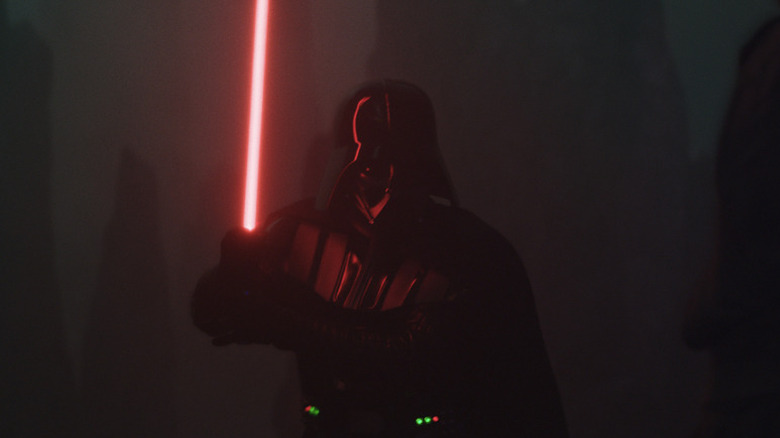
/Film reached out to Nancy Cartwright, who has provided the voice of Bart Simpson for more than 35 years. She responded to questions via email, and has faith that voice actors will not be replaced by artificial intelligence.
"Ultimately, the true magic of performance lies in the human element and the nuances can never be replicated by technology alone," she wrote (emphasis hers). "In many ways, it is faster and easier to get a performance out of a person, rather than a machine -- like when I am being directed on an animated show. I take the direction, change my voice, and even ad-lib — something a machine cannot do. This is what truly separates just a 'sound' [from something that gives] life to the artwork ... I believe that technology can enhance the voiceover profession rather than make it obsolete."
The importance of the human element was a recurring refrain from the people we spoke with for this article, including Billy West, who was the voice of Fry on "Futurama," Doug Funnie on "Doug," and Bugs Bunny in the original "Space Jam."
"You can't replicate the acting," he says. "You can't replicate the original artistry, the original synapses ... they can't steal your mind or how you interpret things ... you could use it to the extent where it would be touches here and there and nobody would know the difference. But if you're going to let everything rest on that technology, they probably have a long way to go."
"They could not sample Michelle Yeoh, and create a CGI rendering of her, and recreate what she did in 'Everything Everywhere All at Once,'" echos Maurice LaMarche, who has over 400 credits to his name and is most famous for his work on "Pinky and The Brain," voicing Brain. "I don't care how advanced the AI technology, it doesn't have a heart. It doesn't have a soul. It doesn't come from within to know what will make a viewer cry, or make a viewer laugh."
If you've ever watched "The Powerpuff Girls," "Loki," or played the latest Batman video games, you've heard the voice of Tara Strong, a veteran performer with over 600 credits. She says she's been in studio sessions with actors who can perfectly mimic a legacy character, but despite their ability to capture a similar tonality, "they don't have the soul of that character." She thinks AI "will be able to mimic, I think they'll be able to star in movies, star in cartoons, maybe fool some people. But I don't think — and maybe this is Pollyanna of me — I don't think they're going to be able to capture the essence of someone who was born to be a performer."
The Technology Isn't There Yet
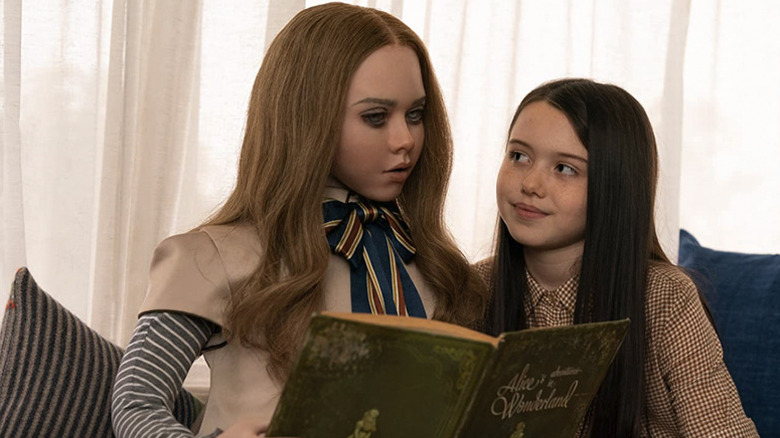
Duncan Crabtree-Ireland is the National Executive Director of SAG-AFTRA, the labor union that represents actors across film, television, radio, and more. He's recognized an uptick in AI quality, but also doesn't think it has progressed to the point where AI could fully replace human actors. "I think any of us who've used text-to-speech technology know that it is a lot better than it used to be, but it's still quite limited," he points out. "If you imagine listening to the Harry Potter books with text-to-speech technology versus listening to the audiobooks of the Harry Potter books, which are full of artistry and really performed as much as they are read, those are two very different things. I can't tell you that it could never be the case in the future someday that AI technology couldn't attempt to replicate that performance quality. But it's definitely not there now."
Keythe Farley isn't fully buying it, either. "I don't think that AI is going to replace actors doing scene work anytime soon. They keep making these claims about how it can be emotionally viable, but I don't know how two AI actors play out a scene together in that regard."
While none of the people /Film spoke to believe voice actors will imminently be made obsolete, most acknowledged being scared or at least concerned about the implications of AI on their profession. "It's really terrifying how great the technology is getting, and I think it's super dangerous," Strong admits.
Tim Friedlander, a voice actor with credits on "Hunter x Hunter" and "One Punch Man," likens this new wave of AI technology to the long-term effects certain innovations had on the music industry.
"You look back at music, it's the same. 'Oh, well, synthesizers are going to make piano players obsolete, and loopers and samplers and digital interfaces audio is going to make performers obsolete.' And to a certain extent, we are now, 30 or 40 years later, where you can go to a performance and you'll have everything running off a Pro Tools rig and one singer [on stage] ... So it has eliminated an entire generation of performers, of musicians. Potentially, it's going to have the same impact here."
Even so, Hollywood has not raced to replace actors en masse — not yet, anyway. "The hope that we have, at least any kind of shining light, bright light in this, is that producers still want a human person to direct," Friedlander says. "They still, for the most part, don't want to replace human voice actors, if it comes down to the performance."
"It's all about how clever the voice actor will get with what they were born with and what tools will exist in the future," Nancy Cartwright writes. "Innovating rather than fighting change is a good perspective to keep in mind. I believe that the artist can and will always find ways to use technology to create, rather than simply allowing technology to dominate them and make their art form a thing of the past."
"By the way," she adds, "the derivation of 'animation' is 'a bestowing of life ... filled with breath ... make alive ... spirit' — something unique to the artist and not a machine."
The Intangibles
Try as it might, there are some things technology simply cannot do as well as a human. In Jon Favreau's 2003 Christmas classic "Elf," there's a scene in which Will Ferrell's character, Buddy the Elf, chugs a two-liter bottle of Coke and, a couple of minutes later, lets out a comically long belch. After a failed attempt to use computers to produce the burp, the production hired Maurice LaMarche to provide the vocal effect.
"The filmmakers had tried using the technology they had to cobble together digitally several long burps," he explains. "They needed 15 seconds. What they came out with, there were no nuances of speech or emotion to it. They couldn't get a convincing-sounding 15 second-long burp. Now I do something with my throat. I've done it since fifth grade. It's a combination of Tuvan throat singing technique, where you just rasp your voice at the very lowest note it'll go to, and [a tongue move]. You're making echo chambers in your cheeks by doing that with your tongue. You combine that, and you get [makes loud burping noise]. And just hold that for 15 seconds. Because a human being did it, a human being with a sense of humor, and more important, a sense of comedy — because I was really trying to crack up the recording engineer as I was doing it — you got the result of what cracks people up when they watch 'Elf' every Christmas."
Another thing computers can't do effectively is ad-lib. Bart Simpson's famous "eat my shorts!" catchphrase spontaneously sprang forth from Nancy Cartwright during a table read. That intangible aspect of voice acting and performance was also underlined by several members of the community, including Candi Milo, who has nearly 300 acting credits; she recently worked on the reboot of "Animaniacs" and previously voiced the title character in "Dexter's Laboratory." She tells us, "We all miss group records because you miss reacting to, and laughing with [other people], and thinking of ad-libs ... there's nobody to react to. There's nobody there that says something funny so you can do an ad-lib, and it misses that natural pace, that natural energy, that natural vibrancy."
Meanwhile, LaMarche recounts an instance in which he employed a trick he'd heard from another actor, incorporating an element to his performance that a computer never could. "I delivered every Lexus commercial to my best friend. I pictured them in the corner of the booth, on the other side of all the ad people and the creatives, in a little chair in the corner. I told them to keep it empty. I delivered every Lexus commercial to my best friend. I think that's what made my run as that voice so successful. An AI doesn't have a best friend to talk to."
Possible Upsides To Artificial Intelligence
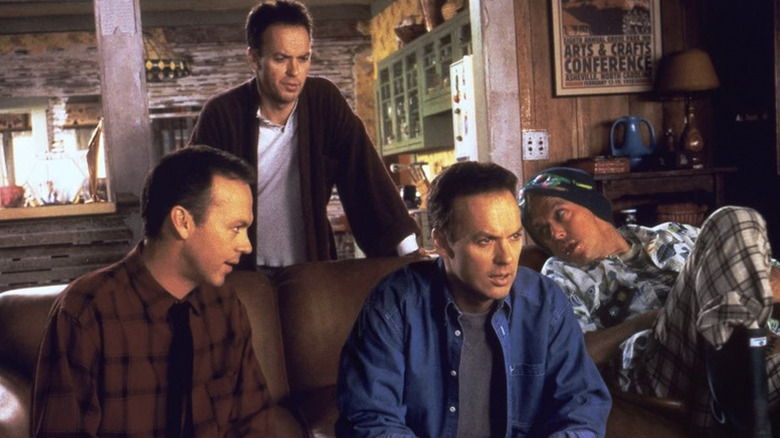
While artificial intelligence may seem like an existential threat to the voiceover profession, several of the people /Film interviewed are trying to find a silver lining. In Nancy Cartwright's view, "[AI technology] could provide more opportunities for voice actors and make their performances more accessible to a wider audience by learning how to create artificial changes to their voices or adding nuances to their voices that they couldn't perform physically before — for example, speaking in a higher or lower octave or accent."
That accent example is currently being put into practice at a company called Veritone. Working with clients like NCAA, the Australian Open, The Masters golf tournament, CBS News, and hundreds more, Veritone uses AI in several different ways, but over the last year, they've become a significant player when it comes to synthetic voices. Co-founder and CEO Ryan Steelberg believes every voiceover artist should have their own versions of their synthetic voice created. Then, each artist can essentially become their own boss by overseeing an AI model of their voice which can produce more sessions in a day than a human could physically record — and speak in languages the human artist can't actually speak.
"Voice talent is not just the sound of their voice," Steelberg says. "Voice talent and voiceover is how effective they are in speaking. Right now, we can create great-sounding clones, but how the presentation of that voice is melded with and into a production is still a talent. Our position with voiceover talents is we embrace them. We have lots of voiceover talents as customers. We create synthetic voices, and we help manage those voices for them. They need to view this as a tool ... You take a great American English voiceover talent. Tomorrow, they can set up shop and offer their voice and their capabilities of, ironically, voicing their voice in multiple different languages. We can actually help bring a lot more business opportunity for voiceover talent by them investing and being willing to work with synthetic models."
"The Price is Right" host Drew Carey recently experimented with using an AI-generated model of his voice during a portion of an episode of his SiriusXM radio show, and after it didn't go over particularly well, he said he wouldn't be using it again. The technology may not be quite advanced enough to take over hosting duties for a radio show yet, but imagine an artist being tasked with recording a large number of hyper-local radio spots. ("You're listening to the Big Ape, 95.1, WAPE, Jacksonville's number one hit music station.") If that artist has a synthetic version of their voice (and if they reach an agreement with their employer), they could farm out those hundreds of recordings to the AI model and sit back while the check rolls in. The same thing applies for an artist hired to record audio versions of articles on websites, or to narrate audiobooks.
There are practical uses for this in the sports world, as well. One of Veritone's clients is soccer announcer Alan Smith. For the World Cup, the company used an audio clone of Smith's voice to do real-time announcing for hundreds of games that he wasn't able to actually voice himself. Using the same real-time data that powers box score updates, the clone of Smith's voice can read that data and do play-by-play commentary for a match the real man has never even seen.
'It's Time And It's Money'
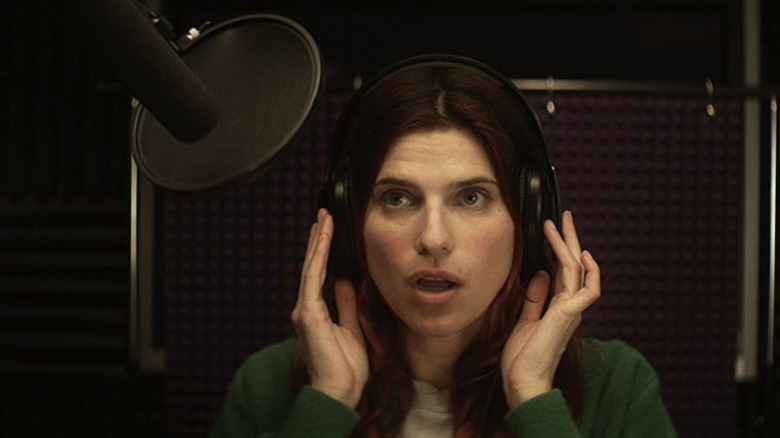
In addition to using synthetic copies of actors' or celebrities' voices, remember that companies like this can also generate totally new voices as "skins" for additional line readings. Ryan Steelberg offered a practical example of how that could be used going forward. If a company wanted to set up a tip line about mental health issues, he and his team could design a voice they think could be soothing and empathetic to the callers in an effort to help calm any anxiety they may have.
"Voiceover talent has historically been using their own voice as their asset," he says. "They need to start thinking of their expertise of all things voiceover and looking at these tools because companies are doing it right now. And voiceover talent, they actually are in the driver's seat right now. They understand the industry. They understand the boards, [industry marketplace] Voices.com, how to get the jobs out there. When there's an opportunity, they need to be able to apply for that job, if you will, by using all the tools at their disposal. By them just saying, 'I'm only going to use my real voice,' I don't think that makes a lot of sense."
For Abigail Savage, that skinning AI technology simplifies things and allows a film or TV production to spend that money in other areas where it may be spent more effectively. "It's time and it's money," she says of the two greatest benefits she's experienced working with AI. "I can be the single microphone input for 20 different voices throughout a documentary that just needs occasional background conversation to fill in and create a realistic soundtrack. That's a lot more straightforward than asking 20 different people to come in and record one single line of audio and then trying to tease out a performance from them ... especially in my case, where I'm comfortable with the performative aspect of it."
Tim Friedlander identified a couple of other possible benefits. Instead of listening to article narrations through robotic-sounding text-to-speech voices, those with impaired vision could have a more enjoyable and authentic experience with an AI-enhanced version. The technology also has the potential to provide a literal voice for people who are non-verbal, allowing them the ability to customize the sound to match their personality.
"You're going to see premium talent who are embracing this," Ryan Steelberg predicts. "They're going to get a lot more work. And you're going to see, people who are not embracing this are potentially the ones who are going to be exited out of this industry."
But Maurice LaMarche isn't aligned with Steelberg's stance that all voiceover performers should have an AI model made of their voice. "No, I can't see that happening. Why? Because I can already do it. I enjoy making my voice do my bidding. I enjoy becoming ["Futurama" character] Lieutenant Kif Kroker. I don't want to push a button and hear Lieutenant Kif Kroker come back at me. I can just record me saying that, and go, 'Oh. You know what? That I can do that better.' It's retakes and retakes until I think it's funny enough. You should see how many times I do a Cameo, until it's funny enough. A computer doesn't know when it's funny enough."
Potential Downsides
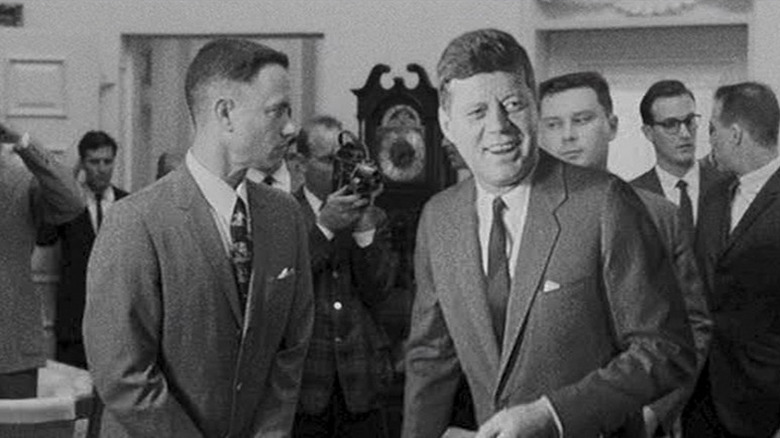
A prediction Steelberg could be right about, though, is that AI-generated voices may soon spell the end of so-called "soundalikes," actors who make their living by impersonating famous voices in a variety of official capacities. "[Tobias Meister] is the name of the voiceover talent who's famous for doing Brad Pitt's voiceover work in Germany," Steelberg says. "Those days are going to be numbered here. Brad Pitt and Tom Hanks and these people, when their show and their scene is being exported, it's going to be [an AI] version of their voice that's going to be speaking in [another language]."
It's funny Steelberg mentioned Tom Hanks, because the "Toy Story" and "Cast Away" star has actually had a secret weapon in the voiceover industry for years. Jim Hanks, Tom's younger brother, has been acting since the early 1990s and has credits on projects like "Robot Chicken," "JAG," and "Dexter." But he's also arguably the most famous soundalike in the world, having doubled Tom's voice as Woody from the "Toy Story" franchise since 1995. When you hear Woody's voice in toys, theme parks, video games, and Disney on Ice, you're hearing Jim's voice, not Tom's.
Since famous Hollywood nice guy Tom Hanks probably wouldn't create an English-speaking AI version of his voice that would take away work from his brother, Jim himself may not have to worry about being replaced. However, he knows others in his field may not be so lucky. "I think the soundalike industry is definitely vulnerable," he says.
Candi Milo has also done some soundalike work. "Part of the contract for a film is that you will do pickups or reshoots, but mostly audio pickups, as the actor's time allows," she says. "I cannot tell you how many times I have gone on a set because so-and-so won't do their pickups, or it's too expensive to fly Angela Lansbury in, so they hire somebody like me to go in and do two lines of her. That's how easy it is to do."
When Lansbury was in London during the making of "Mr. Popper's Penguins," the studio called Milo onto the Fox lot in Los Angeles to perform a couple of lines. She was paid a one-time fee and does not get residuals on the project, because she's not credited as an extra voice. This has been a common practice in Hollywood for decades, but AI models could conceivably bring that to an end.
And pour one out for all of the John F. Kennedy voice impersonators who have previously gotten work in movies like "Transformers: Dark of the Moon" and "Forrest Gump"; today, a production could work with the former President's estate and generate the lines they need using his actual voice as a foundation.
"If you want to reproduce a piece of history in a film, like a 'Forrest Gump' kind of scenario, maybe using the real JFK and using this technology to use his voice print to say, 'I believe he said he had to go pee,' maybe that would've produced a more convincing moment in the film," Maurice LaMarche concedes.
But Jim Hanks' concerns extend far beyond soundalikes. He suspects a rise in AI might lead to lower wages for all voice actors. "I've been in this industry long enough to watch earnings drop, because every time anybody who actually creates content on the producer end of it finds a way to pay talent less. So if you're going to allow people to use AI based on your voice, I suspect they're going to immediately go, 'Well, you're not going into the studio, so why should we pay you as much?'"
Regarding the examples provided earlier about artists licensing their AI voice to read hundreds of articles or audiobooks, Hanks doesn't imagine the outcome will be quite as rosy as it seems at first glance. "I can't imagine that those people would go, 'You know what? We want Morgan Freeman to read this article instead of this [text-to-speech voice],' because why would they pay somebody? They don't have to at this point."
Ethical Concerns
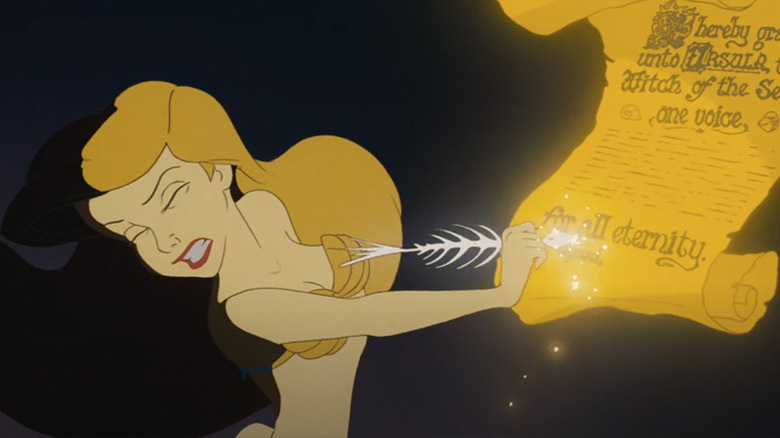
Concerns about the morality of implementing new technologies are often as old as the technologies themselves, and AI is no different. The Bourdain documentary was a particularly thorny example, given that Bourdain's family members apparently did not give the filmmakers permission to use an AI-generated version of his voice. That was a creative-driven solution to an obstacle, but some corporate business practices are also being called into question. Two months ago, major audiobook distributor Findaway Voices came under fire after revelations that the company, which was acquired by Spotify last summer, was giving Apple the right to use Findaway's human-read audiobook narration files as training data for Apple's machine learning models. The problem was the voice artists who provided those recordings were not aware that their voices were contributing to that technology, and they did not give their permission for the recordings to be used in that manner. Apple and Findaway have since stopped the practice.
"I want to make sure that if I give permission for someone to use my voice, that I'm the one giving the permission and that I'm paid fairly for the use, that I have an understanding of how long my voice is going to be used and for what," Keythe Farley says. "I don't think there's anybody who's a performer out there who doesn't want to know that their voice or their performance or their image is being used in a way that they wouldn't consent to, whether that's moral or for any reason whatsoever. So it's just really about actors maintaining control over their voices as this new technology comes into the fore."
Jim Hanks recommends that voice actors take an extra close look at their contracts before signing on the dotted line. "I just recently signed a contract for something that I can't talk about. But in the first couple of negotiations, when the contracts were going back and forth, there was really specific language where they were saying that they wanted the right to use whatever I did and be able to manipulate it and make other things down the line. And my lawyer caught it right away, and I caught it too, [and] my lawyer went, 'No, that's not going to happen,' and they went, 'Okay, no problem.' But again, what I feel is what big business is going to do is they're going to try to slip that stuff in and hope that people don't notice it, and then go, 'Whoops, [it says] right here in this contract we can do it. You signed it.' So I think people definitely need to be aware of that."
In addition to his acting credits, Tim Friedlander is the founder and president of NAVA, the National Association of Voice Actors, an organization that has been trying to educate the community and arm voice actors with the proper tools to combat being exploited. He explained that NAVA hired a lawyer to draft a "synthetic voice AI rider that we have on our website that talent can put in to proactively hopefully protect against this going forward."
Keythe Farley is also a member of NAVA and has been involved with these education efforts. "What we've been putting out to our membership is basically if you go to work, and there's a standard SAG-AFTRA contract, [and] frequently there will be addenda to that contract, there'll be riders attached to that contract. If there's anything in those riders regarding synthetic use of your voice or your likeness — or your movement, if you're a performance capture performer — those clauses are what they call mandatory subject of bargaining, which means that until they have sat across a table and negotiated those terms, they're absolutely null, void, and unenforceable. So for actors in the union, what we've been counseling people to do is sign the contract, forward it to the union, and then let our lawyers go to work."
The organization's hope is that non-union actors will download their rider to attach to their contracts to ensure that no one's voice is being stolen and used without permission and compensation. Thankfully, it seems to be going well so far. "One of the things, at least that we're finding, the feedback we've heard from people, is that [many productions are] more than happy to add these in there, because they don't have the intention of synthesizing or digitizing somebody's voice," Friedlander reveals. "So a lot of people are having a lot of luck adding this into their contracts."
"We're looking to avoid any contract that says, 'You have the right to use my voice for anything you want to forever across all known media now or hereafter devised throughout the known universe,'" Farley says.
Questionable Offers And A Complicated System
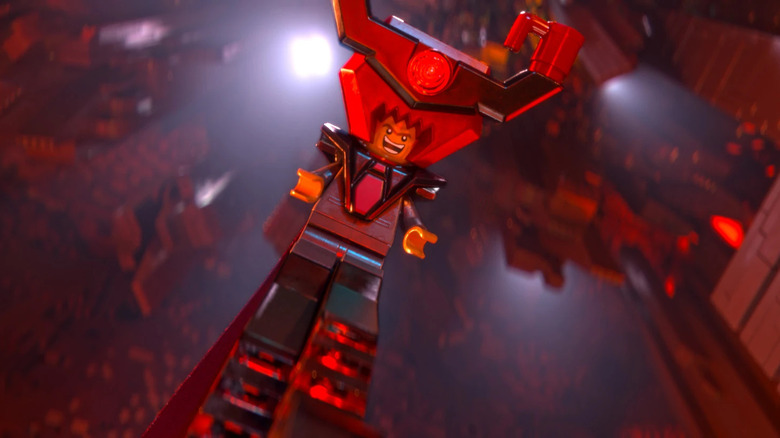
Even prominent voice actors have had close brushes with sketchy situations. "I was approached to do a voice thing for an NFT project and they wanted to basically have me say a million different lines, really random things, and then they would teach this computer program to say anything in my voice," Tara Strong recalls. "And I said, 'So theoretically, they could make it say I hate a specific human, or type of human, or race, or say really terrible words that I wouldn't say in my real world?' And they're like, 'No, there are failsafes.' But let's be real a minute. Right? You can't really guarantee that."
Similarly, Maurice LaMarche says he was approached by one of the top studios to perform a particular impression. "They wanted me to basically read a telephone book into the microphone, and see if they could then create an animated character using the voice of the celebrity, who I presume refused to do this, and see if they could create this character with my very decent impression layering over samples of his real voice. They offered me a large sum of money, and I've turned it down flat. Do I think that stopped it in its tracks? No, but I would not be able to look at whatever the product was later and go, 'I helped with that.' I can't be the person that helped with that. I can't say, 'Well, they're going to do it anyway, so I may as well take the money and run.' I can't do it."
Unfortunately, there are plenty of people who would take that job (or one like it), especially people who are attempting to gain a foothold in the industry. Things can quickly become complicated.
"What you have is a cadre of underemployed actors that would be happy to replace you," Candi Milo laments. "They would be happy to do it, because they call it their way in. 'I've got my foot in the door, I'm just going to do this.' And I went, 'That is your entire body in the door. Because once you do that, there's no going back.' ... Screen Actors Guild, as a union to protect us, is so big and they're so disparate that [they're providing] different needs. Maybe I've done [the first entry in a franchise] and the studio wants to do part two and they don't want to pay more money, and I say, 'Fine, you can't use me, then.' But somebody says, 'Well, I want that job. They don't want Candi, and I want that job, and I can sound like her real voice, so I'm just going to do it.' Do they represent her, or do they represent me saying, 'I don't give permission for you to do this'?"
That constant fear of being replaced, relatable in so many professions operating in capitalist societies, is about more than just money for these performers. There's something indescribable that happens when an actor truly inhabits a role — something that can't be quantified, but can be felt by those who connect with the final result.
"There are definitely many times, particularly in voiceover, where the industry doesn't like to make you feel cherished as much as the fans do," Tara Strong says. "The [production] will say, 'Oh, we made this billion in toys' — which we don't have a backend on — 'and this billion on the movie, and we want to make the next movie and we want to give you guys scale and a half.' So you guys are making billions and you want to give us $2,000? [They'll say], 'Right, and if you don't do it, we're going to hire someone to copy your voice.' That doesn't feel so good. I don't know any actor that doesn't, especially in my world that I'm in every day, which is the animation world, put their heart and soul into something and feel very connected to a character. It's hurtful when they say, 'We could get someone else.' Because you really feel like once you are established as that character, it's a part of you. There's a part of me in everything that I do. That negotiation is a little soul-crushing. So I don't know that some genius company working with a Hollywood mogul would really give a s*** about honoring what a voice actor's created if they can mimic it."
Duncan Crabtree-Ireland specifically addressed a question many people had about the James Earl Jones scenario: Why didn't Disney just hire a replacement actor instead?
"That's a question that's impossible to answer, but what we can say is that so long as that work is being compensated and paid for, then the incentive to do it because of that is removed," he says. "So the company isn't choosing to do that because they're saving money. The company is choosing to do that because they believe they're getting the best creative output by using that iconic voice. And that is inherently a protection for our members, because if it's not being done for economic reasons, if it's being done for creative reasons and it's being done with consent and compensation, that preserves the whole range of other job opportunities that aren't tied to one particular performer's voice for everyone else. So really, I think establishing that principle that synthesized voices and AI voices don't translate into free work, that's the most important principle to help make sure our members are protected."
/Film reached out to multiple people at Skywalker Sound, but a senior publicist told us they are not able to participate in this story.
"I think that the misconception is that we are trying to stop this technology from coming into being, which is a fool's errand," Keythe Farley clarifies. "What we need to understand is that we are partners in this technology, and what the creators of this technology need to understand is that there are rules of the road, and that those rules need to be followed."
Deepfakes Will Continue To Be A Problem
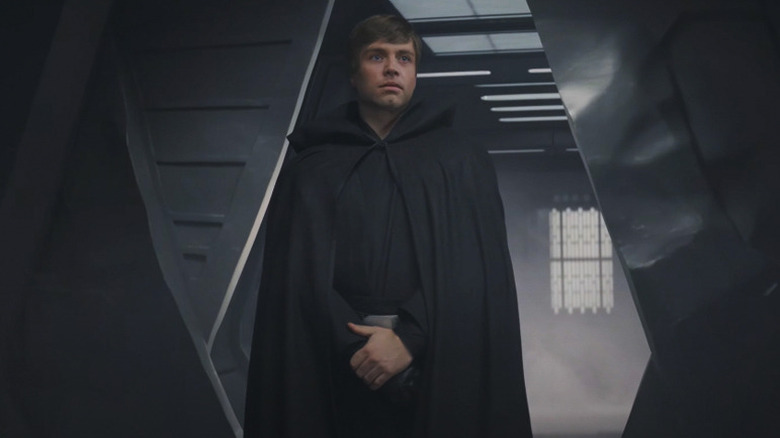
Perhaps the most egregious and obvious example of not following those rules of the road comes in the form of deepfakes, which have been a problem for years. But this new AI technology provides new methods of abuse to the worst offenders online.
Duncan Crabtree-Ireland says the realm of deepfakes are where SAG-AFTRA has seen "the most egregious violations" of the rules, and Tim Friedlander cited a terrifying real-world incident that happened not long before /Film spoke with him for this piece. "A month ago or so, there were voice actors who were having their voices doxxed on Twitter, saying racist and homophobic things and giving out somebody's home address. Like saying, 'Hi, my name is so-and-so, here is my home address,' and then going on a racist tirade from there. It sounds like them. I mean, it sounds legitimately like, 'Oh, that sounds just like you. I know who you are.' And we're just the beginning of this. We're just at the beginning."
"They can have you saying things you never said," Billy West tells /Film. "They can stick your face on Johnny 'The Wad' Holmes from a porno film and put it on Twitter and go, 'Ah, here's your boy. Here's the guy you think is so great. He's a smut peddler.' That's a game people are just dying to play."
"I think people are hungry to get people canceled," agrees Tara Strong, who has experienced an AI company taking her voice and making her say "horrible" things. "I think that some people deserve to, but I think, by and large, a lot more are targeted that don't really deserve to. And I think that's going to make that even scarier."
"The worry is that anybody with a synthetic voice app can grab Bart Simpson's voice and then put it out saying and doing things that the actor might not be even aware of, and making money on it," Keythe Farley says. "And the other thing, too, is to be able to take that voice, Nancy Cartwright's Bart Simpson, and sell it to folks without Fox's knowledge and compensation or the actor's knowledge and compensation. That's where the rubber meets the road."
Billy West sounds disgusted by the lack of artistry involved with using AI technology. "What drives somebody to [devote their career to voice acting]? The love of the art. I think that's why it's never boring. That's why we never run out of passion or inspiration. I don't know how much passion or inspiration you need to be an AI artist or to swipe prerecorded tracks and mold it like it was Play-Doh."
Here's What's Being Done About These Issues
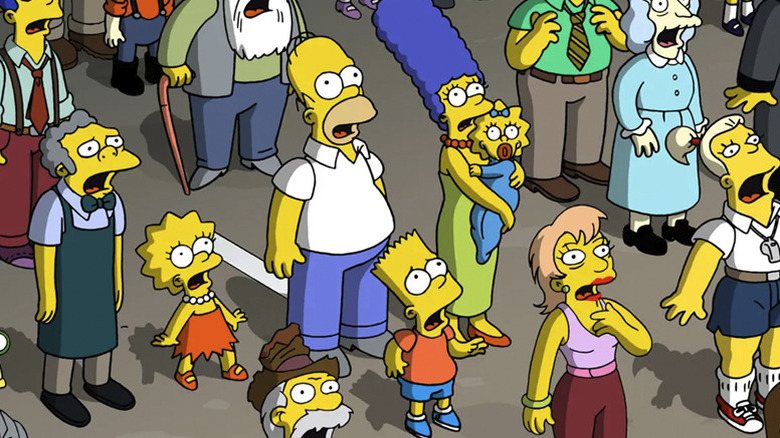
The James Earl Jones news conjured nightmarish imaginary scenarios involving voice actors. Consider a situation in which 20th Century TV decides it wants to keep "The Simpsons" running, but when it comes time to renew Nancy Cartwright's contract, the network decides that instead of hiring her, it would rather tap into her old archival recordings and use AI to generate new line readings for Bart Simpson for future seasons. Thankfully, that won't actually happen, and Duncan Crabtree-Ireland explained why.
"All of those episodes of 'The Simpsons' that have ever been recorded since it started, and everything going back decades before that, is subject to a reuse of footage of photography and soundtrack provision. It's in our collective bargaining agreement. It basically says if they're going to make any kind of other use of the soundtrack or photography of any project, they have to negotiate with the performers who are involved and pay compensation as part of that negotiation process. So in that example that you gave, if they wanted to use that as the basis for creating an AI voice model and then using that for further projects, they would have to negotiate with her for permission to do that. And if they did it without negotiating or getting permission, we, the union, can pursue that through an arbitration. There will be circumstances in which she could sue them in court if she wanted to. So there are legal remedies that are already built into the collective bargaining agreement to address any kind of use beyond the original use. And that includes making it part of an AI training data set, that includes use of clips, it includes any aspect of that kind of use."
While there are safeguards in place against major studios engaging in bad behavior, those don't apply to the comparative Wild West of deepfakes. But SAG-AFTRA is trying to protect its members from that, as well. Crabtree-Ireland explained that the union has had success in getting some legislation enacted in New York and California to help put those protections in place, but he would still like to see action taken at the federal and even global levels.
That's all well and good for union members. But what about people who aren't union members? In addition to downloading NAVA's free AI rider and applying that to their contracts, is there anything that can be done for them? Crabtree-Ireland said even non-union work can be done under union contracts that help protect people from being exploited.
"It is really hard to envision how you can adequately protect people from this sort of thing without using collective bargaining, because there is such a tendency for overreach on the part of companies who do this stuff. And if you aren't part of a collective bargaining group and you don't have a lot of leverage, it can be very hard to push back on demands that you do things like sign away your rights to your image, likeness, or voice. What I would just say to everyone who will be reading this is it is essential that you not do that. Once you've signed away, in perpetuity, the rights to your image, likeness, or voice, it is virtually impossible to get it back. We've seen many, many examples of people that have really been abused in this way. I know it's really hard to say no to that sort of thing, but it is essential that you say no to that thing. One way you can do that is simply by reaching out to us to help get a project organized. Even if you're not a member yet, we can help organize projects. And once they're under a collective bargaining agreement, now it's no longer the individual performer's job to have to fight that."
It's also worth noting SAG-AFTRA is working with other partners inside and outside the industry to, as Crabtree-Ireland put it, "establish a common set of principles for the human-centered implementation of AI technology."
"This goes beyond voiceover or even beyond just the entertainment industry," he says. "This is a broader issue."
If the past few months are any indication, artificial intelligence is going to be a major part of our lives going forward. That may be an uneasy realization for many, but Abigail Savage suggests we shouldn't be afraid of it.
"I think right now, people are uncomfortable with it unless it's very [clearly] specified in a project, 'This is an AI-recreated voice of this past person. They never really said these lines into a recording.' I think if the common audience knew the degree to which we are already manipulating reality when we are doing sound editing work, I think it would be less controversial. At some point in the future, it's probably going to be more normalized, because we're already cobbling together interviews to make people say sentences that were never actually spoken. I do documentaries all the time, and the degree to which we are imposing, manufacturing, a reality so that the director's viewpoint and the interviewee's viewpoint comes across in a more obvious or clear manner, I think would really shock most audiences ... At some point it will, I think, become a normal tool in our toolkit for being able to tell stories."
"CGI sucked when it first came out too, but it was abused everywhere," she concludes. "I think it took something away from filmmaking for a few years while we grappled with how much to use, how to use it, and the fact that there was a deep uncanny valley going on. Technology gets absorbed by artistry, and artistry eventually wins out."
Read this next: The 30 Most Anticipated Movies Of 2023
The post Hollywood's Voice Actors Sound Off About The Perils and Possibilities of Artificial Intelligence appeared first on /Film.
Newly Discovered "By-Design" Flaw in Microsoft Azure Could Expose Storage Accounts to Hackers
Cyberpunk 2077 NVIDIA Ray Tracing Overdrive Mode PC Performance Benchmarks: Path Tracing On A GeForce RTX 4090

Cyberpunk 2077 Patch 1.62 is now available for download which adds support for Path Tracing through the NVIDIA RT Overdrive mode.
CD Prokjekt Red & NVIDIA Deliver Path Tracing To Cyberpunk 2077 In Patch 1.62's RT Overdrive Mode
The new Cyberpunk 2077 1.62 Patch makes the world of Night City more beautiful and believable with accurate global illumination and shadows achieved through the use of Path Tracing. NVIDIA and CD Projekt Red developers have already stated that the game will become very demanding when RT Overdrive mode is enabled and you will require the best of the best hardware to run it at a stable frame rate. That's one reason this is only a "Technical Preview" for now & standardization of Path Tracing will require further optimizations down the road.
According to Jakub, Ray Tracing in games has more importance in the development process than just looking good. For example, he states that Ray tracing is helping solve some major problems encountered in game development. While ray tracing addresses certain individual elements of the rendering pipeline such as fixing the shadows, the reflections, or the ambient occlusion.
All those element layers are stuck up on top of each other while Path Tracing goes a different route & rather than having to do all those layers individually, it does them all at once in a single proper unified rendering pipeline. Compared to standard ray tracing implementations, the path-traced image is way more balanced, it's way more accurate and also more beautiful. The rendering is said to be similar to the rendering techniques used by animated films in the past which would take the game (Cyberpunk 2077) one step closer to photo-realism.
Cyberpunk 2077 RT Overdrive Mode PC Requirements
As per CD Projekt Red, the NVIDIA RT Overdrive Mode for Cyberpunk 2077 is only supported by the following graphics cards:
- NVIDIA GeForce RTX 40 Series (RTX 4090/4080/4070 Ti)
- NVIDIA GeForce RTX 30 Series (RTX 3090Ti/3090 Only at 1080P/30FPS)
If you don't have any of the said GPUs, the feature will be turned off by default as it requires a very high-end GPU due to its demanding nature. CD Projekt Red has also stated previously that the RT Overdrive mode is going to be hardware-agnostic which means that it won't require proprietary technology to run and gamers will be able to enjoy it on any graphics card out there, given that it has the processing and compute prowess to run Path Tracing at a stable frame rate.

But it looks like the rest of the cards with at least 8 GB VRAM will only have the option to take screenshots with the path tracing renderer rather than playing the game in real time. The rationale given for this move is that it means rendering just one frame, as opposed to rendering several frames every second (i.e. FPS), which would happen when playing the game. The path weighs in at 19.6 GB for PC players.
Cyberpunk 2077 RT Overdrive Mode PC Performance Analysis
In the brief time that we had benchmarking through the NVIDIA RT Overdrive mode, we noticed a big visual performance difference between the standard Ray Traced & the Path Traced renderer & as expected, the performance difference is just as big. You are not going to get a framerate above 30 FPS without using DLSS.
Even a card such as the RTX 4090 can not run the game at 4K native res but at 1440P, 40-50 FPS is doable. DLSS 3 is more of a necessity when running RT Overdrive mode but it is been told that CD Projekt Red will continue working with NVIDIA to further optimize the performance of the RT Overdrive mode.
Cyberpunk 2077 RT Overdrive Mode Native 4K (RTX 4090):

Cyberpunk 2077 RT Overdrive Mode DLAA 4K (RTX 4090):
Cyberpunk 2077 RT Overdrive Mode DLSS 2 4K (RTX 4090):
Cyberpunk 2077 RT Overdrive Mode DLSS 3 4K (RTX 4090):
Cyberpunk 2077 RT Overdrive Mode 4K (NVIDIA GeForce RTX 4090
Cyberpunk 2077 Path 1.62 PC Path Notes
Path Tracing: Technology Preview
- Added a Ray Tracing: Overdrive preset which includes the Path Tracing technology. You can enable the Ray Tracing: Overdrive preset in Settings > Graphics > Quick Preset, or just Path Tracing separately in Settings > Graphics in the Ray Tracing section.
- Additionally, we included an option to render path-traced screenshots in Photo Mode for other Ray-Tracing-capable graphics cards with at least 8GB VRAM. If your graphics card has more than 8GB VRAM and this option is still greyed out, it means you need to lower your in-game resolution. Note that the higher the resolution and the less powerful the GPU is, the longer it will take to take a screenshot (between a few seconds to several minutes). You can enable Path Tracing for Photo Mode in Settings > Graphics in the Ray Tracing section.
DLAA
- Added NVIDIA DLAA, an AI-based anti-aliasing mode designed to improve image quality. DLAA requires an NVIDIA RTX graphics card. It can be enabled in Settings > Graphics in the NVIDIA DLSS section.
Intel XeSS
- Added support for Intel Xe Super Sampling 1.1, an upscaling technology using machine learning to provide improved performance with high image quality. It can be enabled in Settings > Graphics in the Resolution Scaling section.
Benchmark improvements
- Improved the Benchmark to display more information in the results screen, including PC specs, GPU driver version, and selected settings.
As Gen Z flounders at work and Millennials struggle to buy a house, Boomers are enjoying a golden moment. Once again, Gen X is ignored. Whatever [Obvious]
Back in the 50s the Air Force dropped a nuke in South Carolina. Sadly, it failed to explode [Vintage]
Microsoft Azure Users Warned of Potential Shared Key Authorization Abuse
Microsoft Azure shared key authorization can be exploited to access business data and achieve remote code execution.
The post Microsoft Azure Users Warned of Potential Shared Key Authorization Abuse appeared first on SecurityWeek.
Star Wars' Gwendoline Christie Thinks Captain Phasma Secretly Had A Crush On Finn
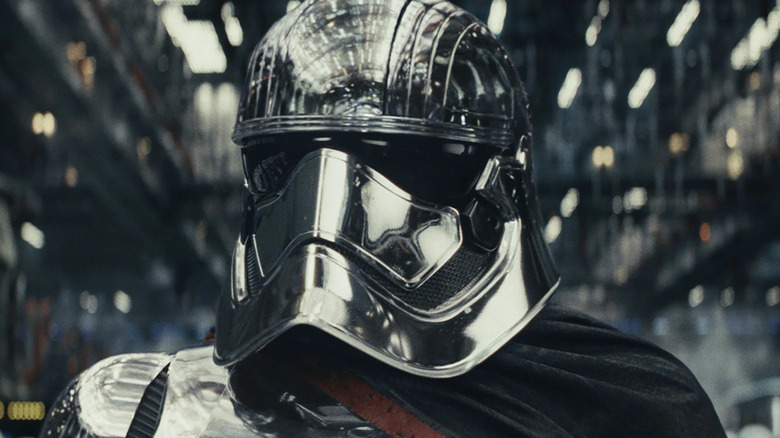
Star Wars Celebration is a place full of treasures and gems for fans of the galaxy far, far away. This is where the biggest news is announced, and where movies that may or may not get made are first unveiled alongside first looks at incoming projects. Naturally, all of this happens while all kinds of merch and art are open to the public to purchase with their hard-earned credits.
While the flashy panels with big announcements get all the attention, it is often in the less extravagant panels that you find the juiciest information and insights about the making of this franchise. One such panel was the Villains of the Sequel Trilogy discussion, in which actors Gwendoline Christie (Captain Phasma), Andy Serkis (Supreme Leader Snoke), and Ian McDiarmid (the Senator himself, Sheev Palpatine) talked about joining the franchise in new or returning roles and how they developed their roles in these three films.
Always a joy to watch, Gwendoline Christie absolutely ate up the conversation and held the crowd on the palm of her hand. She told stories of playing this generation's Boba Fett, the character with the cool costume who appeared for only a handful of scenes but chewed up every moment on screen and left people wanting more as they took to buying the figure to imagine what happened to them.
Phasma remains one of the most bafflingly vague and mysterious characters of the sequel trilogy, one with as little information about her background as she has lines in the film. Still, she is also one of the coolest. During the panel, Christie finally answered one of the biggest lingering questions about the chrome-clad stormtrooper captain — why the hell was she so fixated on Finn? Well, in short, Christie explained to thunderous applause that it was "because she fancies him."
Tale As Old As Time, Song As Old As Rhyme
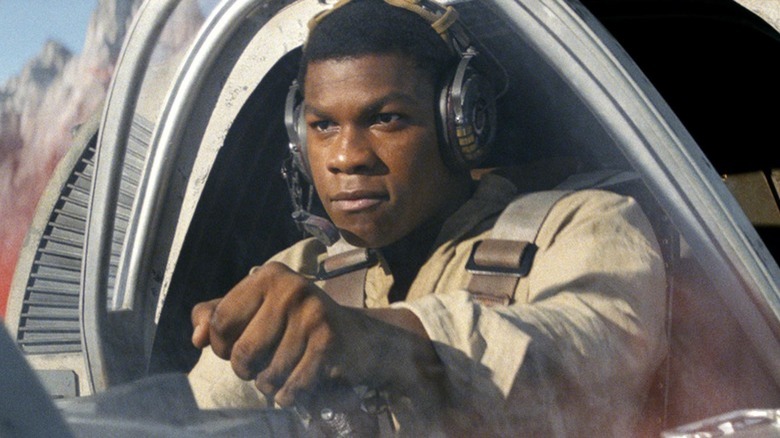
It makes all the sense in the world when you think about it. Phasma and Finn have little screen time in the trilogy, but whenever they are together on screen, there is a palpable and intense chemistry, which leads to some of the best verbal confrontations in those movies alongside sparring sessions between Reylo (Rey and Kylo Ren) and Poemitage (Poe Dameron and Armitage Hux).
Phasma doesn't seem that much different from other abusive Imperials we've met throughout the decades like Tarkin or Thrawn. She has a commanding presence and overall very intense vibe, but for some reason, she is very much out to get Finn more than any other rebel, even before he joins the Resistance. That there is something else there, something Christie defines as "oppressed lust," would make this one of the most fascinating and funny relationships in the franchise.
It's not like the text disproves this theory, either. As Christie explained, the fact that Phasma never removes her armor like she was a Children of the Watch suggests inflexibility, which "suggests huge suppression of many, many things." When Phasma realizes that Finn escapes and turns to the Resistance, she starts envying him, because he is "someone who has liberated themselves from the confines of order and convention," as Christie described it, while Phasma herself remains "someone that has an inner fragility that is so intense that they have to press and lean into a sense of order and authority."
So where does that leave us? During the panel, Gwendoline Christie and Andy Serkis joked about wanting their characters to return, and given that Finn is still out there, why not fulfill this prophesied romance? Let Finn and Phasma explore their slow will-they-won't-they relationship, you cowards!
Read this next: Andor Character Guide: Meet The Cast Of The Rogue One Prequel Series
The post Star Wars' Gwendoline Christie Thinks Captain Phasma Secretly Had A Crush On Finn appeared first on /Film.
Update: Cyberpunk 2077 with the patch 1.62 – technology preview of Ray Tracing: Overdrive Mode
Are you looking for cutting-edge, stunning visuals? Then we have some awesome news for you – Patch 1.62 for Cyberpunk 2077 is now available on GOG!
With this update, our friends at CD PROJEKT RED have teamed up with NVIDIA to bring a completely new, fully ray-traced, aka path-traced, rendering mode to the game – Ray Tracing: Overdrive Mode.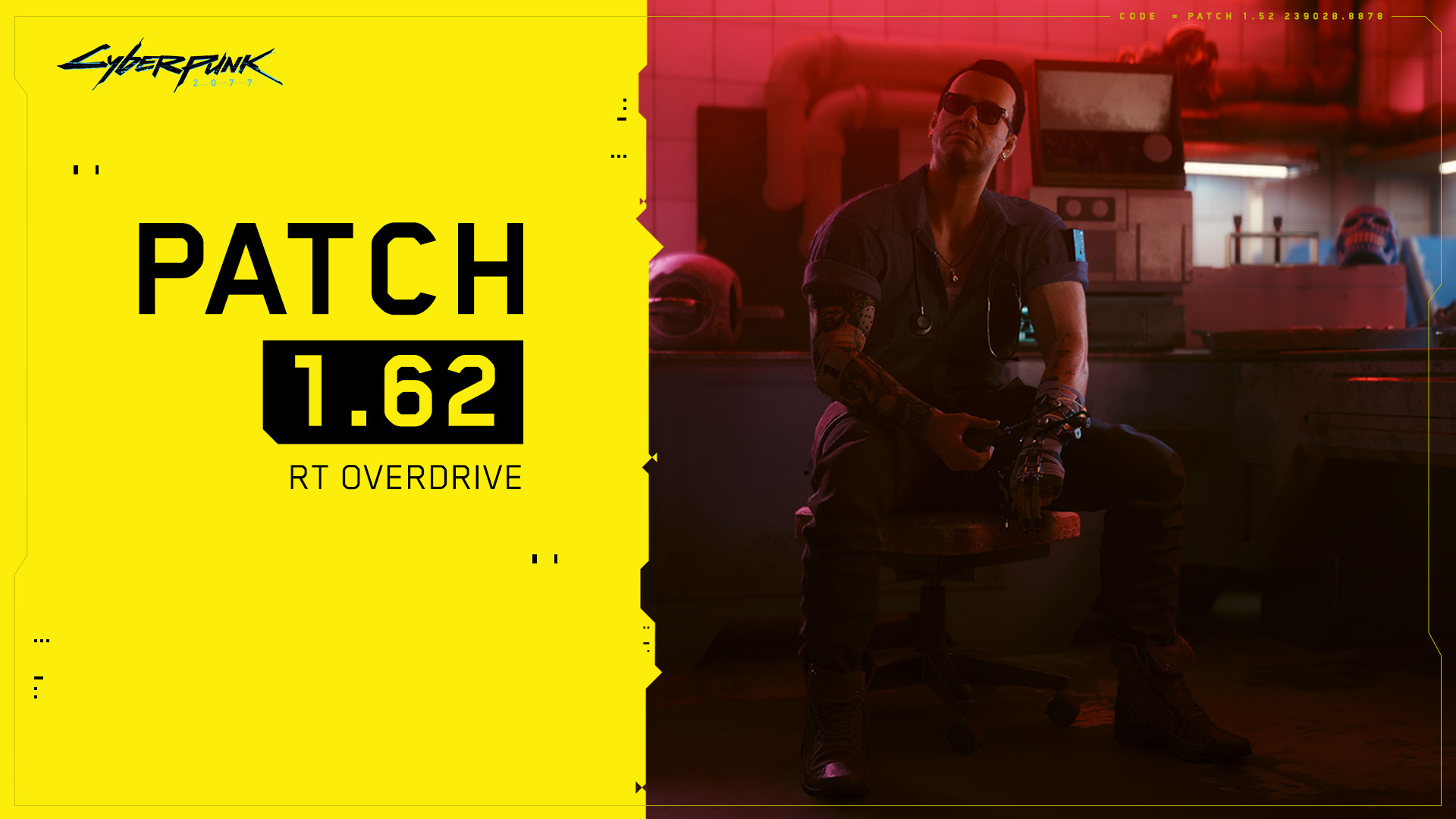
Patch 1.62 pushes the boundaries of what’s possible in current technology. Because of its groundbreaking nature, the update is a technology preview intended for the high-end PCs. While it’s not going to be perfect from the start and players might experience some issues, it is a vision of the future that CD PROJEKT RED and NVIDIA want to share, and are committed to continue working on and improving.
If you’d like to know more details about the update, full information about it can be found HERE.
Wake up Samurai, we have new sights to marvel upon!
AMD CPUs Are Safe For Late-Loading Microcode, Will No Longer Taint The Linux Kernel
The Marvels Trailer Breakdown: When Superhero Movies Go Full Body-Swap
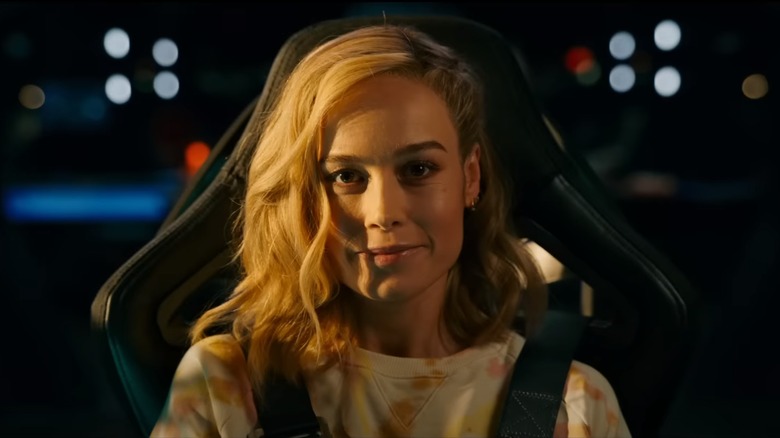
Carol Danvers, her supporting cast, and the Marvel Cinematic Universe as a whole have all come a long way since our very first tease of Brie Larson's space-faring superhero. Most would agree that the 2019 film did an adequate job of establishing the origin story for the eponymous Captain Marvel, tying together her Air Force background, a test flight gone horribly awry, and her subsequent team-up with a young, pre-eyepatch Nick Fury (Samuel L. Jackson) against the perceived threat of the shapeshifting Skrulls and the sinister Supreme Intelligence (played, incredibly enough, by Annette Bening). After saving the world once again in "Avengers: Endgame" and making brief cameos in both "Shang-Chi and the Legend of the Ten Rings" and "Ms. Marvel," the Disney+ series starring Iman Vellani as the lovable Kamala Khan, we've yet to see the energy-blasting superhero back in action ... until now.
With the release of the new teaser for "The Marvels," the follow-up film directed by Nia DaCosta, the MCU is once again foregrounding its most powerful hero alongside two of her most integral supporting characters -- Kamala and Teyonah Parris' Monica Rambeau, first introduced in "WandaVision." As the title would heavily suggest, the sequel features the trio joining forces to combat yet another cosmic threat. But, as is usually the case with the Avengers, their biggest obstacle might just be figuring out how to get along.
The new footage reveals just enough to get excited about the upcoming film, though without giving away too many major plot details. But since when has that ever stopped us before? Read on for our extensive breakdown of the teaser trailer for "The Marvels."
Intergalactic
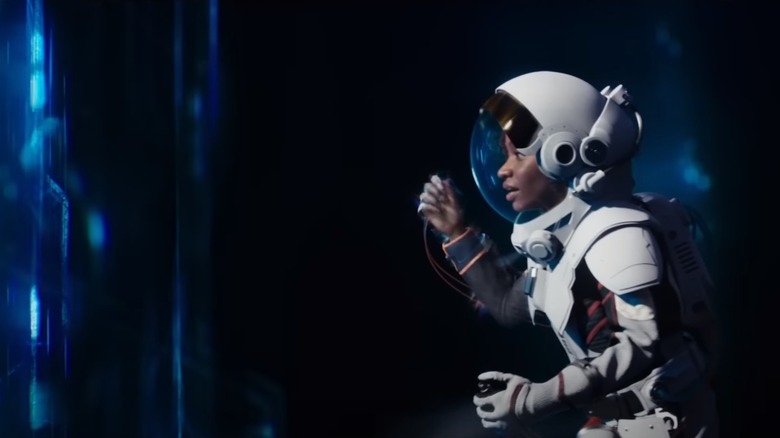
Teasers are all about setting up expectations and, if there's one thing Marvel tends to be good at, it's teasing audiences with skyrocketing expectations. That's likely why the teaser for "The Marvels" wastes no time at all kicking off with the strains of "Intergalactic" by the Beastie Boys, setting the mood for the cosmic-based shenanigans to come. We open on a nifty-looking space station in orbit around Earth, under the auspices of "S.A.B.E.R." -- and not the preestablished organization known as "S.W.O.R.D.," interestingly enough, which Monica's mother Maria (played by Lashana Lynch in "Captain Marvel") helped found.
This is all little more than nerdy window-dressing surrounding the inciting element of the teaser (and, presumably, the film). While on a spacewalk to investigate a jump point -- those hexagonal portals that allow advanced ships to jump from point to point in the galaxy, as we've seen in the "Guardians of the Galaxy" movies, "Captain Marvel," and others -- Monica does what she did best in "WandaVision" and inexplicably touches another mysterious, energy-based anomaly that activates her latent powers and sends her careening back towards the space station. But the person in the spacesuit is no longer Monica, but an incredibly terrified (yet rather excitable) Kamala Khan! Nick Fury can only stare aghast as Kamala recognizes him and innocently asks if this is some sort of Avengers entry-level membership test. Classic Kamala.
Catching Up
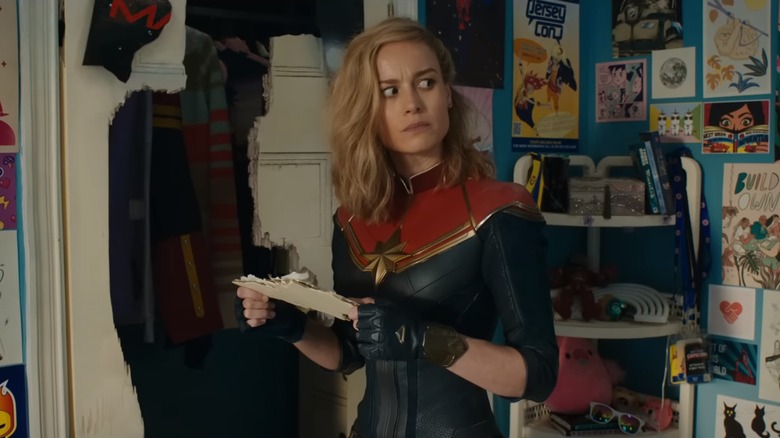
The very last time we saw Larson suited up as Captain Marvel, she'd just teleported into Kamala's room in the post-credits scene of the "Ms. Marvel" finale with absolutely no idea how she ended up there. As it turns out, the weird space energy that Monica can't help but interact with appears to be responsible for the "entanglement" between the three heroes, activating whenever one uses their powers and essentially causing any one of them to swap places with the other at any given moment. Call it the ol' switcheroo, superhero-style.
Obviously, this rather hilarious plot development (Carol's increasingly frustrated reaction to appearing in Kamala's house turns into something of a running gag in this teaser) also has some serious consequences, as Monica realizes that Kamala has been transported halfway across the galaxy to wherever Carol had just been, facing off against some bad guys in an unknown locale. But for the present, it's just plain funny to see Larson ham it up with as much incredulity as she can muster as she looks around the room of her ultimate, Number One fangirl.
House Crashers
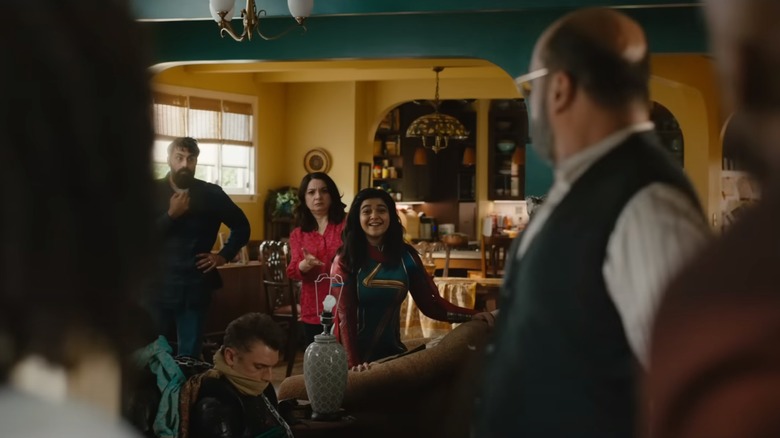
Based on the (potentially misleading) series of events laid out in the teaser, it seems as if Monica's bizarre encounter in space leads her and Nick Fury to the very steps of Kamala's New Jersey home, which we saw in "Ms. Marvel." When they appear on her doorstep, we're reintroduced to her charismatic supporting characters: her father Yusuf (Mohan Kapur), her mother Muneeba (Zenobia Shroff), and brother Aamir (Saagar Shaikh). In short, it's pretty refreshing to see that many brown people all at once in an MCU movie, even if it's not likely that any of them beyond Kamala get much screen time.
In any event, it appears that Fury and Rambeau are interrupting the Khans in the middle of the family trying to figure out exactly what's going on. There's an unconscious henchmen tied up in their living room, Kamala is in her spiffy new superhero suit, and we see a bunch of debris as they all sit in a circle and attempt to make sense of their predicament. Monica exposits (which is hopefully not what she does for the entire movie) that their powers are somehow "entangled" and, as Kamala unhelpfully demonstrates, it's somehow exacerbated whenever they use their abilities. Cue Kamala's typical nervous excitement to prove herself to others, Carol appearing out of nowhere to smash the Khans' dinner table, and Kamala finding herself in a serious jam.
Goose!
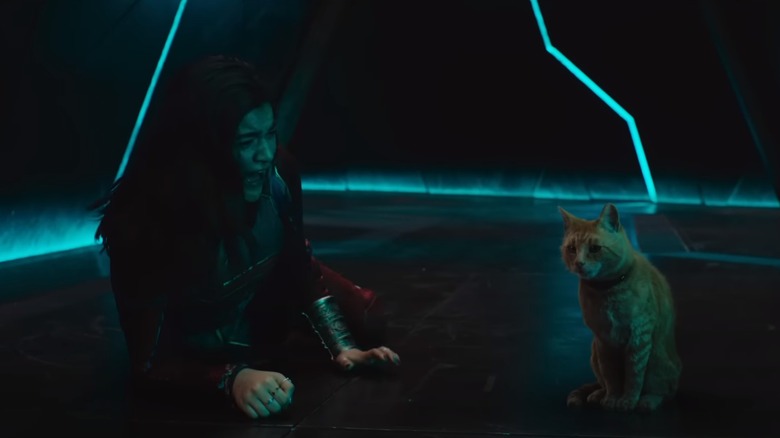
There are a few certainties in life: Death, taxes, and the fact that Goose the cat is not, in actuality, a cat. The scene-stealing extraterrestrial from "Captain Marvel" returns to save the day and simultaneously freak Kamala out, breezily dispatching some bad guys that Carol had just been fighting a second before their latest inconvenient body-swap. Of course, our young hero likely wasn't prepared for the tentacle-spewing little feline to do what it did and Vellani gets to wild out with one of the funniest reactions in the entire trailer. For those who haven't watched "Ms. Marvel," well, it's clear that fans are going to have a tough time keeping up with all the developments in this movie. But, most importantly, this platform ought to give Vellani a chance to prove what the rest of us already knew: that she's a star in the making with tons of personality, talent, and charisma to spare.
Culture Shock
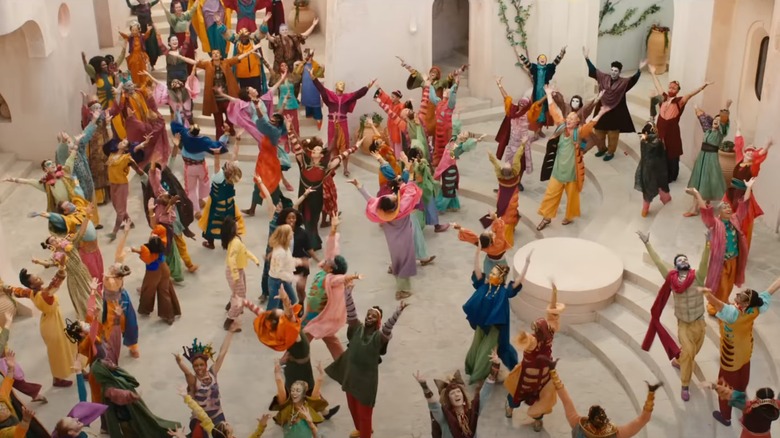
Are ... are musical numbers about to become a Marvel Cinematic Universe trope? We saw Kumail Nanjiani throw himself into a Bollywood dance sequence in "Eternals" as the character Kingo, and now it looks like the heroes of "The Marvels" showed up for a galactic superhero movie and instead found themselves in a musical. The surrounding architecture sure looks similar to the establishing shot of a downright extravagant-looking city seen earlier in the footage, located on a tropical beach and filled with high-tech buildings that look like something straight out of DC's Themyscira.
It's likely this is some as-of-yet unknown alien world that the Marvels have to travel to at some point in the film, but I'm mostly singling this out for the amusing shot of Brie Larson's Carol peeking out from behind the colorful outfits of that region. The visual can't help but bring to mind the awfully tone-deaf "Basmati Blues," another Larson-starring movie from 2017 that everyone involved would likely want you to forget about, where Larson travels to India as a fish out of water and promptly tries to save the day. In any case, I'm pretty curious how this sequence will unfold under the eye of "Candyman" director Nia DiCosta.
A Team-Up For The Ages
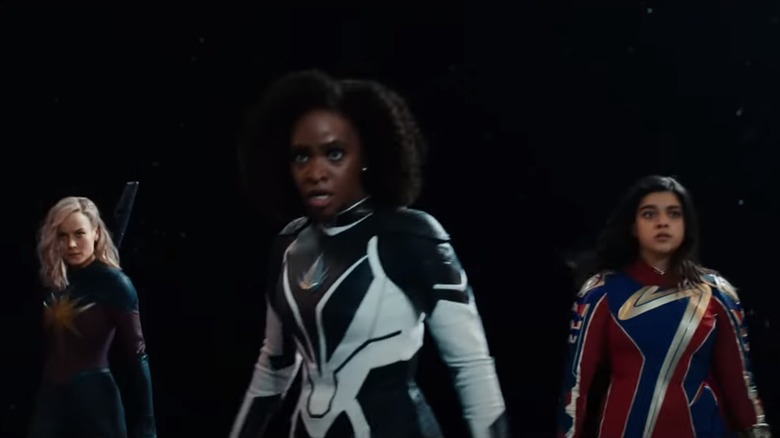
The teaser footage flies higher, further, and faster as we're subjected to a burst of blink-and-miss-it imagery, from Kamala putting the moves on some unfortunate bad guys in the S.A.B.E.R. space station to Monica saving Kamala in mid-air free-fall to a bunch of cats (or other Goose-like aliens) running down some stairs to literal one-second shots of Park Seo-Joon as the enigmatic Prince Yan and Zawe Ashton as what could very well be the villainous General Dar-Benn. The brief glimpse of Ashton says a lot, as she's holding a hammer that appears suspiciously similar to Ronan the Accuser's (Lee Pace) and flanked by soldiers who sure seem to be Kree. The trailer is surprisingly light on any clear shots of definitive villains, either Kree or Skrull or otherwise, but that's to be expected from an early marketing push that's mostly meant to get this movie on the average person's radar.
It all builds towards a show-stopping fight sequence between the three Marvels. Edited to look like they're fighting each other in earnest, we get one last gag as Monica, Carol, and Kamala stand around each other in a spaceship. "We're a team?" Kamala dreamily asks to the dismay of the other two. Getting immediately shut down has zero effect on her, however, as the footage ends on the high note that, once again, Vellani deserves to be a total star.
"The Marvels" will fly into theaters in November 10, 2023.
Read this next: 11 Marvel Comics Villains We Really Want To See In The MCU
The post The Marvels Trailer Breakdown: When Superhero Movies Go Full Body-Swap appeared first on /Film.
SAKRA Review: Takes a Licking, Keeps on Kicking
 Donnie Yen stars in and directs a sprawling story of revenge and justice.
Donnie Yen stars in and directs a sprawling story of revenge and justice.
Cyberpunk 2077 RT: Overdrive Mode Is the New Pinnacle of Graphics and Performance on an RTX 4090

Earlier today, CD Projekt RED released Cyberpunk 2077 RT: Overdrive mode as part of update 1.62, which also introduced official Deep Learning Antialiasing (DLAA) support and Intel XeSS support to the game.
By far the most interesting addition is the path tracing mode's tech preview, though. Dubbed Cyberpunk 2077 RT: Overdrive mode by the Polish developers, it was originally announced to the public alongside the new GeForce RTX 40 Series GPUs in September 2022. Now that the mode is out, we can easily understand why. According to the official patch notes, CD Projekt RED reckons that the top-of-the-line graphics card from the previous generation, the RTX 3090, a monster designed to eat 4K rendering and equipped with 24GB of VRAM, can only handle Cyberpunk 2077 RT: Overdrive mode at 1080@30. For its part, NVIDIA quietly wrote in their blog post that for this technology preview, they only recommend using RTX 40 Series GPUs and DLSS 3 with the game's version of path tracing.
I've quickly checked it out on my PC and can easily see where they're coming from. The RTX 4090, by far the most powerful graphics card currently on the market, absolutely needs DLSS to make this run smoothly.
Trying to run the benchmark at native resolution and without AI assistance provided an average FPS of 20.78.

However, the real surprise is that the most important DLSS plugin isn't Frame Generation - it's Super Resolution. Cyberpunk 2077 RT: Overdrive mode ran at just 38.01 average frames per second with DLSS 3 enabled but DLSS 2 turned off.

On the other hand, DLSS 2(Super Resolution) can do just fine on its own. When set to Performance mode (1080p upscaled), it runs the path tracing mode at over 65 FPS.

Of course, the GeForce RTX 4090 performs best when they are combined. After activating DLSS 3 (Frame Generation), I tried to dial up the Super Resolution to Quality mode (1440p upscaled). This provided nearly the same result as the previous test (66.02 FPS).

When Frame Generation is coupled with Super Resolution on Balanced mode (1252p upscaled), the benchmark of Cyberpunk 2077 RT: Overdrive mode jumps to 84.34 FPS.

This is likely to be the sweet spot for those playing at 4K resolution, though those who play further away from the screen could probably be fine with DLSS SR Performance, which bumps the frame rate over 100 FPS when working alongside Frame Generation.

Of course, this is still a significant hit compared to how the game ran on Psycho Ray Tracing with DLSS 2 and 3 activated. Is it worth it, though? After a short roam through Night City, it's hard to say no.
Cyberpunk 2077 RT: Overdrive mode immediately looks miles better than the previous hybrid solution, especially during nighttime. There are now near-countless lights thanks to RTX Direct Illumination, and they all cast proper shadows, delivering a far more impactful rendition of the cyberpunk vision of the future that Night City was always meant to be. More importantly, the lights add a ton of contrast and vibrance to the game as they realistically spread on nearby surfaces. Even just the car's backlights or some traffic light will leave you amazed when you wade into traffic. As I always imagined, the path traced visuals also synergizes extremely well with High Dynamic Range support. If you've got a QD-OLED display with high HDR brightness potential, there's no better game to show it off.
Going back to performance, there's no stutter to speak of, either, which is baffling when compared to stutter shows released lately that couldn't hold a candle to this visual spectacle and technical prowess. Cyberpunk 2077 RT: Overdrive mode is easily the best optimized PC game available at the moment for the most powerful GPU, and it's about time that someone created a new PC technical showcase.
On this note, it's hard not to feel a tang of disappointment considering this will be the last hurrah of the RED Engine. CD Projekt RED abandoned its creation in favor of the Unreal Engine 5's ease of use and production speed (though they recently admitted it'd only materialize as a development benefit for the second game of the new The Witcher trilogy). We can only hope Epic will be able to fix the UE's stuttering for good before the launch of the next The Witcher game.
The Succession Writers Room Had A Secret Code For That Huge Plot Twist

The latest episode of "Succession" dropped what was possibly the biggest bombshell on the show so far, maybe one of the biggest in all of television. Patriarch Logan Roy has died, while the future of his company and his children are left up to fate. It was an unceremonious passing that happened without warning, taking both the characters and the audience by surprise. Logan began the series in the hospital, but he recovered a while ago and there was little, if anything, to suggest that he might pass. In order to preserve the absolute shock of the event, the writers' room had to mask the news of Logan's death with a "Curb Your Enthusiasm" reference.
Showrunner Jesse Armstrong had to plan out all the different ways the news could leak. In a move that resembles a PR strategy devised by Waystar Royco and Logan himself, actor Brian Cox showed up for a church funeral scene to make it seem as if his character was still alive. Cox presumed that a shoot staged like a funeral service would attract attention and stated that paparazzi bombarded him upon exiting the car, proving that his instincts were correct. The writers' room may not have been as public, but it was still important to keep the news from dropping from close within the HBO offices.
Codename: Larry David
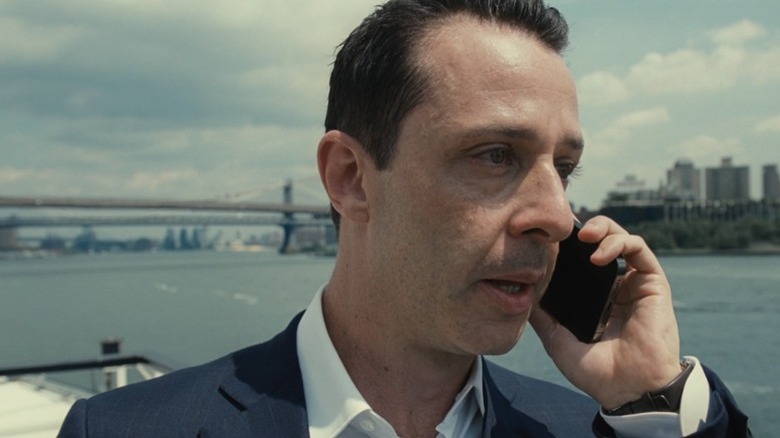
According to Georgia Pritchett, one of the series' writers, she and all of her cohorts were informed of Logan's death in January 2022 so they could properly map out the entire series (Remember, there are still seven episodes left in the show!). Tasked with guarding this highly sensitive information, Pritchett tweeted that the writers adapted the codeword "Larry David" when discussing the episode. Thus, the whiteboard in the writers' room listed episode 403 as "Connor's Wedding, Larry David." "Mind you, that would also have been a great episode," Pritchett added.
It's important for writers to keep track of all the major events happening throughout the course of the series so they can keep their plans and ideas organized. That can create a problem when a particular episode calls for a major plot twist or reveal, and "Connor's Wedding" ranks among the most unexpected but game-changing moments of them all. Using Codename: Larry David was just innocuous enough to write off as an inside joke. Little did everyone know the insider information the term truly carried. Pritchett was right about the golden potential for Larry David at Logan's funeral, though. The man sure knows how to ruin a mourning.
Read this next: 10 Worst Things The Roys Have Done In Succession
The post The Succession Writers Room Had A Secret Code For That Huge Plot Twist appeared first on /Film.
Windows 11 update adds Local Administrator Password Solution and design tweaks
It's that time of the month again when Microsoft rolls out new cumulative updates for all supported versions of Windows, which now includes just Windows 11 and Windows 10. While all versions of Windows 11 are supported, Windows 10 users are only supported on specific versions, depending on the edition they're running. The more interesting updates are also exclusive to Windows 11, since that's the more active platform.
The Marvels Trailer Requires Knowledge Of WandaVision And Ms. Marvel – Here's What You Need To Know
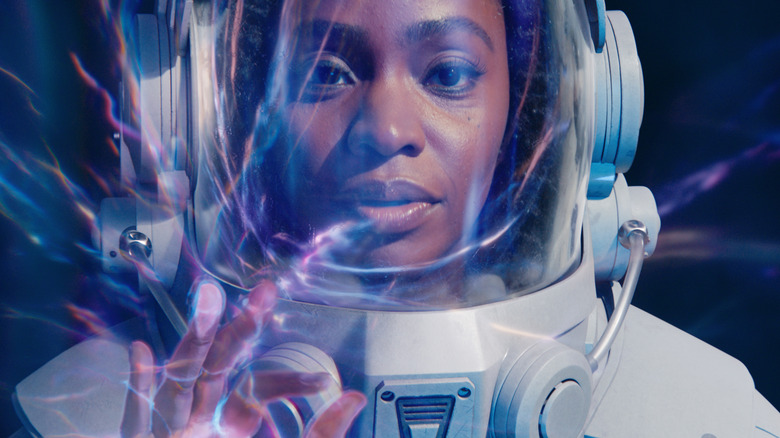
It wasn't that long ago that Marvel Studios' plan to create a closely interconnected movie and TV universe sounded like poppycock. What if one of the films bombed or nobody tuned in for a particular show? For over a decade, the House of Ideas managed to avoid these roadblocks thanks to the Marvel Cinematic Universe's domination of the box office, coupled with the loose -- and, if we're being honest, almost completely one-sided -- ties between the MCU's movies and the live-action series produced under the now-defunct Marvel Television banner. It's why few panicked when ABC's "Inhumans" died on the way back to its home planet or Netflix's "Defenders" shows were casually picked off, slasher-style, in the lead-up to Disney+ launching.
However, now that Marvel has consolidated its movie and TV divisions under one roof, we're beginning to see the drawbacks of this approach. It was often near-impossible to watch the MCU's Phase 4 films and expect to come away with any clear understanding of what is even going on without also watching Marvel's Disney+ series, and vice versa. That will remain the case with "The Marvels," a Phase 5 movie that looks to center equally on Carol Danvers (Brie Larson), the adult Monica Rambeau (Teyonah Parris), and Kamala Khan (Iman Vellani), the latter two of whom have yet to appear in the MCU outside of "WandaVision" and "Ms. Marvel."
If you've caught those series, the "Marvels" teaser trailer probably left you with a big grin on your face, seeing the enthusiastic Avengers fangirl-turned-superhero Kamala come face-to-face with Carol (coupled with the latter's confusion at finding her face plastered all over Kamala's bedroom). As for those who haven't and have struggled to keep up with the recent plethora of MCU material in general, that's perfectly understandable! Allow us to help.
The Westview Incident
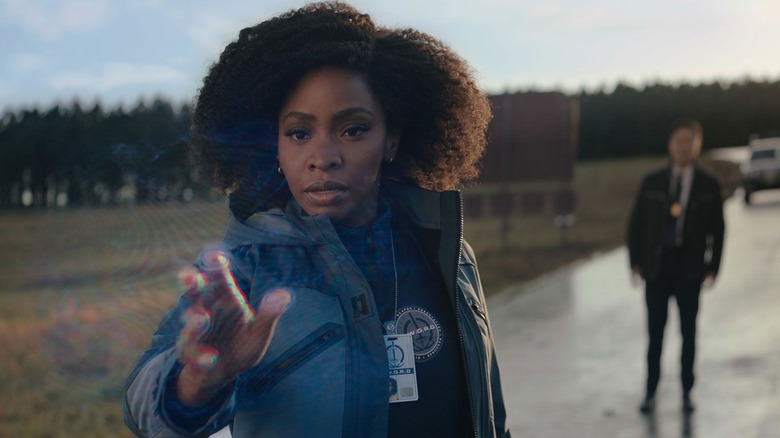
The last time we saw her on the big screen during "Captain Marvel," Monica was a little girl (played by Akira Akbar) starstruck to meet her mother Maria's bestie Carol. As "WandaVision" revealed, Maria would go on to establish S.W.O.R.D. (Sentient World Observation and Response Department), a government agency dedicated to handling other-worldly threats to Earth that would employ the grown-up Monica as an agent. Then, tragedy struck; during a visit to the hospital with her mother, Monica was wiped out of existence by Thanos' snap, only to return five years later and learn Maria had died from cancer while she was gone.
Still in mourning, Monica took on a seemingly minor case for S.W.O.R.D. to distract herself, only to uncover the enchanted alternate reality (aka the Hex) that Wanda Maximoff -- spurred by her grief from losing Vision -- had conjured in the city of Westview. Although Monica managed to infiltrate Westview and briefly pass herself off as a resident, she was eventually found out and Wanda expelled her before expanding the Hex. Being all the more sympathetic to Wanda in light of her mother's death, Monica defied her boss at S.W.O.R.D. by re-entering the bolstered Hex, which unexpectedly caused her cells to be rewritten, granting her energy-based superpowers that ultimately helped her break through to Wanda.
Notably, "The Marvels" hails from writer/director Nia DaCosta. With her feature debut, "Little Woods," DaCosta crafted a story of women struggling to support one another under extreme circumstances. Meanwhile, her second film, 2021's "Candyman," allowed DaCosta to try her hand at a story about familial legacy and trauma within an established franchise. In that regard, "The Marvels" and especially Monica's storyline -- which will explore her complicated history with Carol -- serves as an amalgamation of DaCosta's previous work.
Meanwhile, In Jersey City...
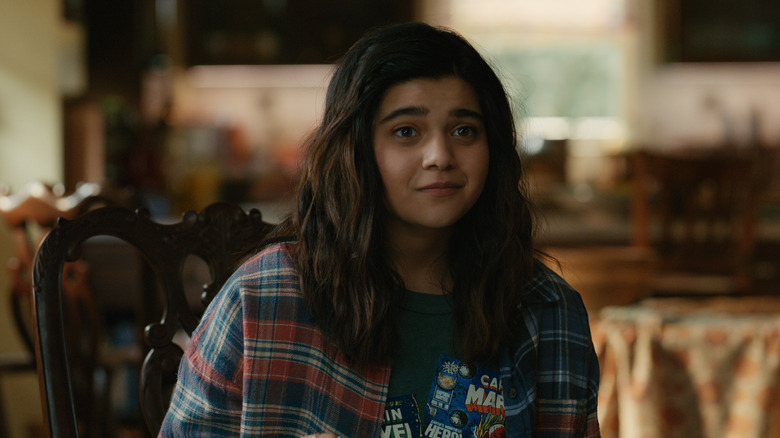
In contrast to Monica on "WandaVision," Kamala was by and large baggage-free when we met her on "Ms. Marvel." An artistic 16-year-old Pakistani-American high schooler who avidly adores the Avengers but particularly Carol Danvers, Kamala was primarily concerned with things like passing her driver's test and sneaking out to AvengerCon (in her own Captain Marvel cosplay outfit, natch) after being forbidden to do so by her parents. That is until Kamala received a mysterious golden bangle from her grandmother Sana (Samina Ahmad) that seemingly allows her to generate objects out of cosmic energy, inspiring her to fashion a superhero identity of her own in the style of her idol.
Because of this, Kamal quickly attracted the attention of the Clandestines, a group of super-powered beings who claimed to be "Djinns" but were actually beings from another dimension determined to return home by any means. Over the course of their encounters, Kamala came to learn more about her family's history, including the link between the Clandestines, her bangle, and her great-grandmother Aisha (Mehwish Hayat), and that Kamala herself was the enigmatic savior mentioned in her grandmother's stories about her childhood experiences during the Partition of India (thanks to some wibbly wobbly, timey wimey plot stuff). There was also a larger conflict between the Department of Damage Control and Kamala, but it ultimately worked itself out, with Kamala's community embracing her and Kamala adopting her superhero moniker.
In addition to all that, Kamala eventually learned she possesses a unique genetic mutation, which may or may not factor directly into the plot of "The Marvels." In either scenario, the themes about familial legacy and trauma from "Ms. Marvel" make Kamala and her backstory a fitting addition to the narrative tapestry Nia DaCosta seems to be weaving with "The Marvels."
2 Plot 2 Much?
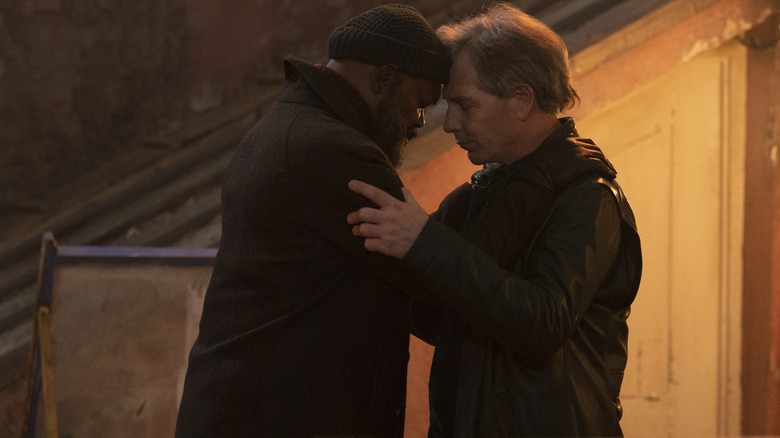
As ought to be apparent by now, there's a whole lot of backstory already in place for "The Marvels," so much so that Nia DaCosta has her work cut out for her, trying to service Carol, Monica, and Kamala equally as characters while at the same time crafting an engaging narrative that can also stand on its own to some degree. Heck, that's without even getting into the "Secret Invasion" series, which will debut on Disney+ between now and "The Marvels" reaching theaters and could have an impact on the latter's plot, given that it centers around Nick Fury (Samuel L. Jackson) -- who additionally shows up in "The Marvels" teaser trailer -- and his Skrull pal Talos (Ben Mendelsohn) from "Captain Marvel" attempting to untangle a global conspiracy to instill Skrulls in positions of power across the Earth.
Compare that to "Captain Marvel," a film that was technically a prequel to "Iron Man" and, as such, could be enjoyed with only limited knowledge of the greater MCU. After the box office disappointment of "Ant-Man and the Wasp: Quantumania," which was billed as no less than an "Avengers"-level event yet required a thorough knowledge of both of the previous "Ant-Man" films and "Loki" season 1 to fully appreciate, it seems the House of Ideas can no longer take it for granted that audiences will turn out in massive numbers for movies that call on them to do extra homework ahead of time. Then again, Scott Lang's no Carol Danvers, and if reviews are on its side (unlike "Quantumania"), "The Marvels" might have an easier time convincing more casual viewers to give it a shot.
It may even inspire them to finally watch "WandaVision" and "Ms. Marvel" -- as they should!
"The Marvels" hits theaters on November 10, 2023.
Read this next: The Most Powerful Aliens In The MCU Ranked
The post The Marvels Trailer Requires Knowledge of WandaVision and Ms. Marvel – Here's What You Need to Know appeared first on /Film.
Reddit Moderators Brace for a ChatGPT Spam Apocalypse
Read more of this story at Slashdot.
CentOS Reminds Everyone End-Of-Life Is Coming For CentOS Linux 7, CentOS Stream 8
Microsoft Signs Its Fifth 10-Year Deal to Bring Xbox and Activision-Blizzard PC Games to Internet Service Provider EE

Microsoft has signed yet another 10-year deal in cloud gaming to bring its Activision-Blizzard PC titles and Xbox to more customers.
After signing similar deals with cloud gaming service providers Ubitus, Boosteroid, NVIDIA, and of course, a 10-year contract with Nintendo to bring Call of Duty games to Nintendo platforms, the Redmond-based tech giant has now signed a 10-year deal with internet service producer EE. Microsoft's head of Xbox, Phil Spencer, announced the deal between the two parties on Twitter some hours ago.
"Microsoft and EE are expanding our partnership with a 10-year commitment in cloud gaming to bring PC games built by Activision Blizzard, following the acquisition, and Xbox to EE customers", the Xbox boss writes on Twitter. Spencer added, "We are committed to bring more games to more people, however they choose to play."
Spencer's tweet explicitly mentions PC games from Activision-Blizzard as well as Xbox, thereby, without a doubt, trying to address concerns from regulators. Late last month, UK regulator CMA said that, while it believes that the planned merger between Microsoft and Activision-Blizzard won't hurt the console market, its provisional considerations with regard to the cloud gaming market haven't changed yet.
"Having considered the additional evidence provided, we have now provisionally concluded that the merger will not result in a substantial lessening of competition in console gaming services because the cost to Microsoft of withholding Call of Duty from PlayStation would outweigh any gains from taking such action", the CMA's revised provisional findings read.
"Our provisional view that this deal raises concerns in the cloud gaming market is not affected by today’s announcement. Our investigation remains on course for completion by the end of April."
As covered last week, Sony wasn't too happy with the U-turn that the CMA made, and as expected, Microsoft more than welcomed the CMA's revised provisional findings.
Written by Aernout van de Velde
NASA Reveals What Made an Entire Starlink Satellite Fleet Go Down
Read more of this story at Slashdot.
Supporters Rally For Library Digital Rights on the Steps of the Internet Archive

More than one hundred supporters gathered on the steps of the Internet Archive last Saturday to rally support for our library in the face of a judgment that threatens the digital future of all libraries.

Digital rights advocate Lia Holland of Fight for the Future read from the letter signed by Neil Gaiman, Naomi A. Klein, Chuck Wendig, Karen Joy Fowler, Cory Doctorow and more than 1,000 additional authors who are speaking out on behalf of libraries, demanding that publishers and trade associations put the digital rights of librarians, readers, and authors ahead of shareholder profits.
Cindy Cohn, the Executive Director of the Electronic Frontier Foundation (EFF), who are representing Internet Archive in our lawsuit, underscored the valuable role that libraries play in protecting reader privacy; values that are not shared by the corporations and platforms that have become intertwined around ebooks. “When libraries can’t own ebooks, how private will your reading be?” Cohn asked. “Everyone deserves the right to read without someone looking over their shoulder.”
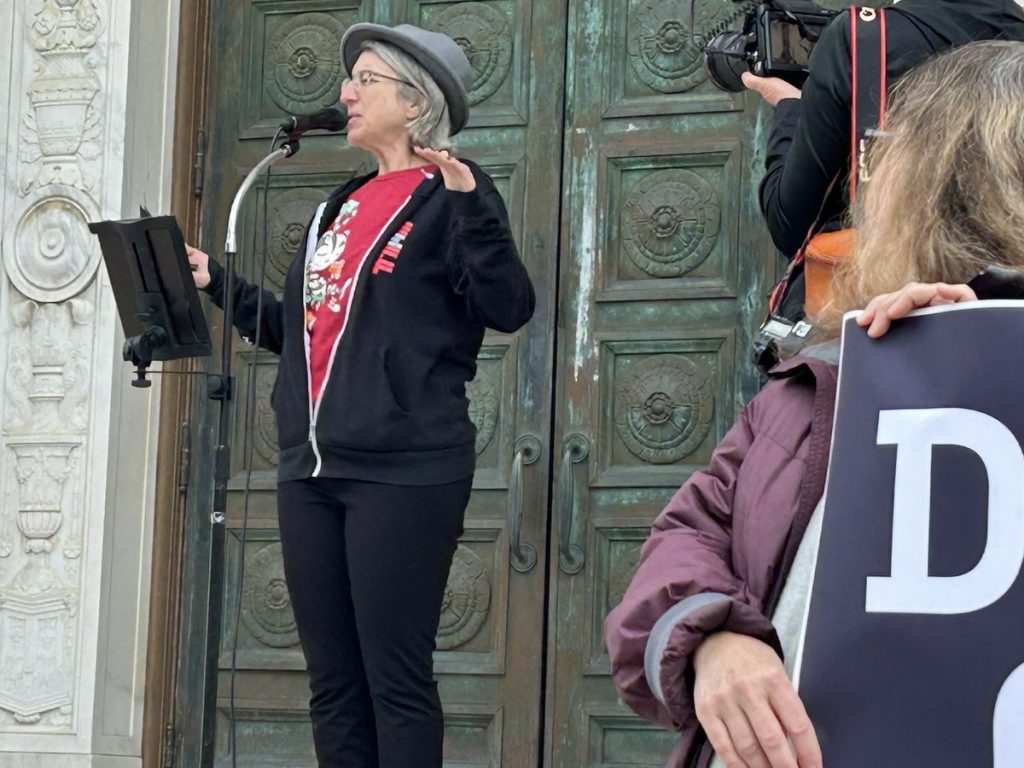
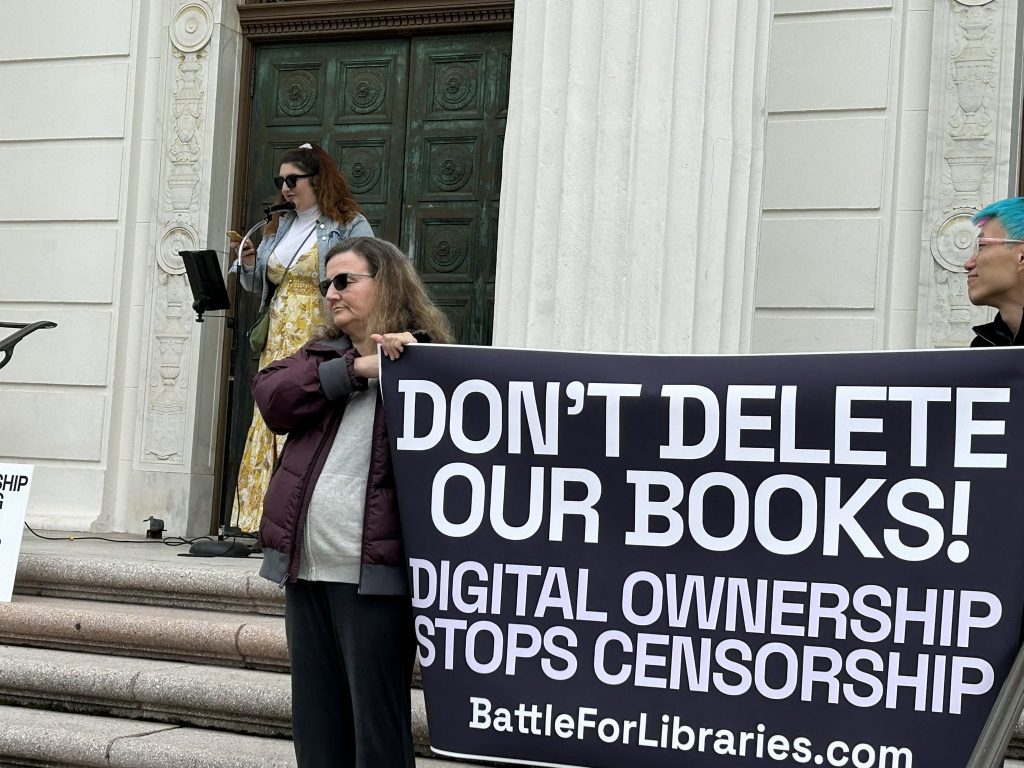
The Internet Law & Policy Foundry’s Lili Siri Spira spoke from her perspective as a “Gen-Z-Millennial cusper growing up on the Internet” about the importance of access to quality information in the face of book bannings and attacks on libraries. “As a former open-source investigator, I know first-hand how important open and free access to knowledge is in order to address the world’s injustices…As a former misinfo analyst, I know what information is out there to replace these burned books and it’s not good,” she said.
Brewster Kahle, the founder and digital librarian of the Internet Archive, gave an impassioned plea about why the lawsuit against the Internet Archive is harmful to libraries and the entire publishing ecosystem. “[The lawsuit] doesn’t make any sense for authors, it doesn’t make any sense for readers, it doesn’t make any sense for libraries, and it doesn’t make any sense for publishers. The library system…has always bought lots of books. But now, [the publishers] are saying you cannot buy an ebook. This makes no sense!”
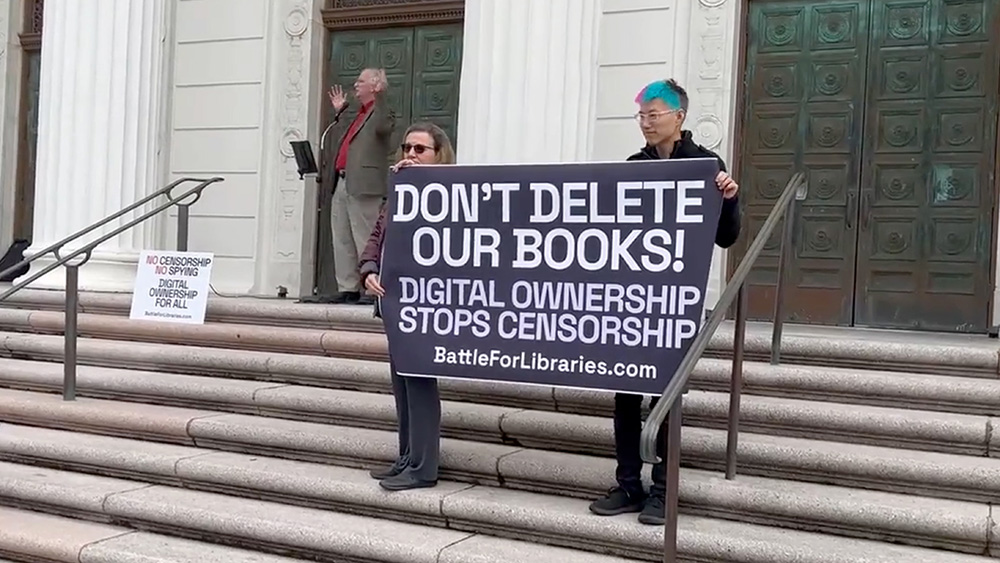
The rally wrapped with cheers for continued action in support of libraries’ digital rights. As EFF’s Cindy Cohn shouted to roars from the crowd, “On to the court of appeals!”
The post Supporters Rally For Library Digital Rights on the Steps of the Internet Archive appeared first on Internet Archive Blogs.
If We Lose the Internet Archive, We're Screwed
Read more of this story at Slashdot.
Cyberpunk 2077 RT: Overdrive Mode Is the Real Deal, Says Digital Foundry Test

The long awaited Cyberpunk 2077 RT: Overdrive Mode, originally announced by NVIDIA and CD Projekt RED for the debut of the GeForce RTX 4000 Series GPUs a few months ago, is just a few hours away.
Tomorrow, the Polish studio is set to release Cyberpunk 2077 update 1.62, which will include the path traced mode developed for high-end PCs as a technology preview. The folks at Digital Foundry were the only ones able to check it out before the April 11th launch date, and their hands-on test is glowing, to say the least.
To begin with, DF's Alexander Battaglia showcased the enormous difference between the rasterized version of the game with the new Cyberpunk 2077 RT: Overdrive Mode. That was hardly surprising, though, as even the rather extensive ray tracing features included when the game launched in December 2020 delivered a significant visual upgrade over the regular rasterization method. In fact, Cyberpunk 2077 already had more ray traced effects than almost any other game:
- Shadows
- Local shadows
- Reflections
- Diffused illumination
- Ambient occlusion
- Single pass global illumination
When we last saw Cyberpunk 2077 RT: Overdrive Mode in action, as part of a behind-the-scenes video with CD Projekt RED programmers and graphics engineers, the path tracing glimpses weren't all that much more impressive than the previous 'Psycho' ray tracing setting available in the game.
Luckily, the new footage shared as part of Digital Foundry's test clearly shows improvements that, in Battaglia's words, are quite large. One example mentioned in the video is local lighting, which was all done in rasterization with the exception of neon lights. As such, many lights in the scenes didn't cast any shadow at all, whereas here, per-pixel soft shadows are realistically borne out of any lights you'll see in the game (and there are a lot in Night City). Furthermore, the multi-bounce local lighting also affects the color of the lights, which in turn bounces off environments. If your car light is pointed at a red container, it'll naturally extend a red glow to nearby surfaces.
Likewise, indirect lighting was mostly handled with the traditional IBL (image-based lighting) probes, leading to wildly incorrect lights when compared to the new path traced Cyberpunk 2077 RT: Overdrive Mode.
The overall look of the game is much more consistent, according to the report, though it comes with a significant performance cost. While the test didn't go too in-depth on this front, it did highlight a particular scene where Overdrive was running at 18 FPS versus 40 FPS with Psycho RT (and DLAA) and 48 FPS with rasterized graphics.
The solution is, of course, activating NVIDIA's Deep Learning Super Sampling upscaler, both 2 (Super Resolution) and 3 (Frame Generation). DLSS Super Resolution performance mode more than triples that 18 FPS to 59 FPS, while activating Frame Generation nearly doubles the frame rate again to 95 FPS on an RTX 4090 GPU, providing a very smooth gameplay experience with incredible visuals, according to Digital Foundry.
I'm very eager to check out Cyberpunk 2077 RT: Overdrive mode myself. Stay tuned for our hands-on!
Written by Alessio Palumbo
Ethereum’s Shanghai Update Opens a Rift in Crypto
Top 10 Cybersecurity Trends for 2023: From Zero Trust to Cyber Insurance
The Weekly Watchlist: Seven Kings Must Die And Titans Season 4 Bring The Action (April 10, 2023)
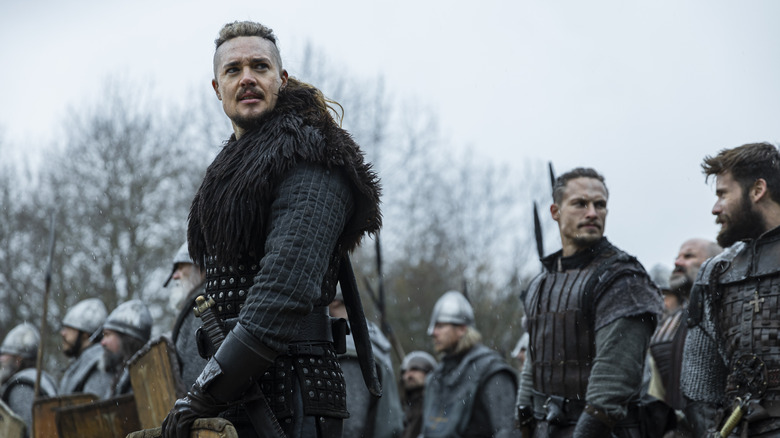
There's lots of great stuff hitting streaming this week, but the debut of the Netflix film "Seven Kings Must Die" and the return of HBO Max's fourth season of "Titans" are two guaranteed to deliver high-intensity action. Fans looking to pair brutal historical epics with their watch of "Seven Kings Must Die" need to look no further than Robert Egger's Shakespearean Viking epic "The Northman" on Prime Video or Neil Marshall's Romans-vs-Picts action-adventure film "The Centurion," available on more than half a dozen streaming services. For those looking for something less bloody and closer tied to "Titans," there's always the Superman origin story series "Smallville," streaming on Hulu, or if you want to get really vintage, there's the young adult shapeshifting series "Animorphs," streaming on Prime Video. There's no shortage of action and adventure available on streaming this week, so let's get to it.
Seven Kings Must Die Brings The Last Kingdom To A Close
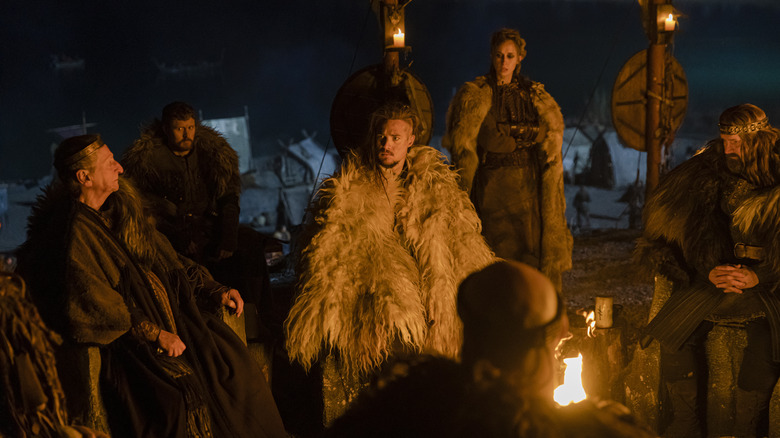
Where to watch "Seven Kings Must Die": Netflix
When "Seven Kings Must Die" releases: April 14, 2023
Fans of the Netflix and BBC Two series "The Last Kingdom" were disappointed to hear that the series would be ending, but at least there's a movie headed our way to wrap things up. "The Last Kingdom: Seven Kings Must Die" is the feature film sequel to "The Last Kingdom," directed by Ed Bazalgette, who directed six episodes of the series. The film will take place after the events of season 5 when King Edward's heirs, Æthelstan and Ælfweard, begin vying for the throne and send all of the kingdoms into chaos. Series hero Uhtred of Bebbanburg (Alexander Dreymon) is back, of course, to try and help put an end to the constant war and in-fighting between the kingdoms and create a united England.
"The Last Kingdom" was a gorgeous but frequently brutal historical action-drama series based on "The Saxon Stories" novels by British author Bernard Cromwell, condensing the 13 books into five seasons of television. There were some major changes from the books to the TV series, especially in later seasons, so even fans of the book series probably don't know everything that could happen in "Seven Kings Must Die." History tells us that England eventually gets united, of course, but it will be interesting to see how Uhtred and his best mate Finan (Mark Rowley) manage to deal with both the troubled succession and a new invasion by a Danish warrior-king. It's sure to be bloody, but also bloody entertaining.
Titans Season 4 Returns For More Adolescent Superhero Action
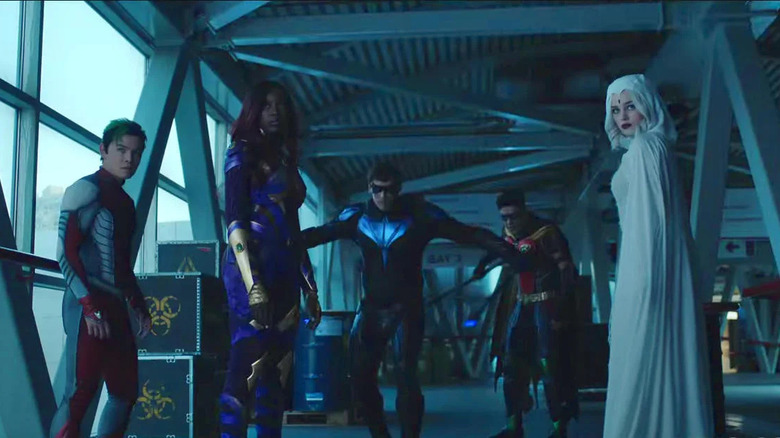
Where to watch "Titans": HBO Max
When "Titans" season 4 part 2 releases: April 13, 2023
On the other end of the action-adventure series spectrum is "Titans," based on the "Teen Titans" comics from DC Comics, bringing the teenage heroes to live action with a bit of edge. The first half of the fourth season was the best the series has been so far, establishing a tone that really works by balancing a bit of humor with some darker, spookier material. There's some of the traditional "Teen Titans" stuff in there, of course, like dealing with the evils of Lex Luthor, but there are also some truly wacky moments, like Bruce Wayne (Iain Glen) doing a dance that originated on the 1960s Adam West "Batman" series, the gang fighting a team of ninjas, and demonic enemies with some seriously scary supernatural abilities. It's been a little scattered so far, but things were coming together in the first half of season 4, and hopefully, that means the second half will be even better.
The Northman Is A Brutal And Beautiful Historical Epic
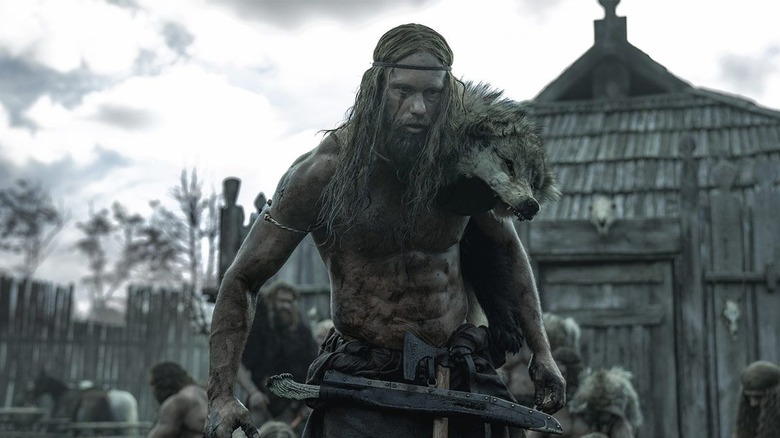
The movie: "The Northman"
Where you can stream it: Netflix
After terrifying audiences with his slow-burn Puritan horror nightmare "The Witch" and re-creating the tale of Proteus and Prometheus through a pair of wickies in "The Lighthouse," director Robert Eggers delivered his ferocious take on Shakespeare's "Hamlet" with "The Northman." Alexander Skarsgård plays Amleth, an exiled Viking prince who returns to take the kingdom that is rightfully his (if that sounds like "The Lion King," that's because it's based on "Hamlet," too!). Eggers doesn't have his Vikings speaking in verse, however, instead opting for a version of the tale where action tells the story much more than words. It's a beautiful and truly brutal historical epic, much like "The Last Kingdom" and "Seven Kings Must Die," and features similar themes around succession, feudalism, and warrior kings. (You can read our review here!) They're also set in close to the same time period, as both take place within the same stretch of about 100 years.
"The Northman" is both dreamlike and a nightmare, as Amleth takes psychedelics in order to enter a trance-like berserker state and the visuals go totally wild. If you want to see an old story told in a bold new way, check out "The Northman."
Smallville Paved The Way For Teen Superhero TV
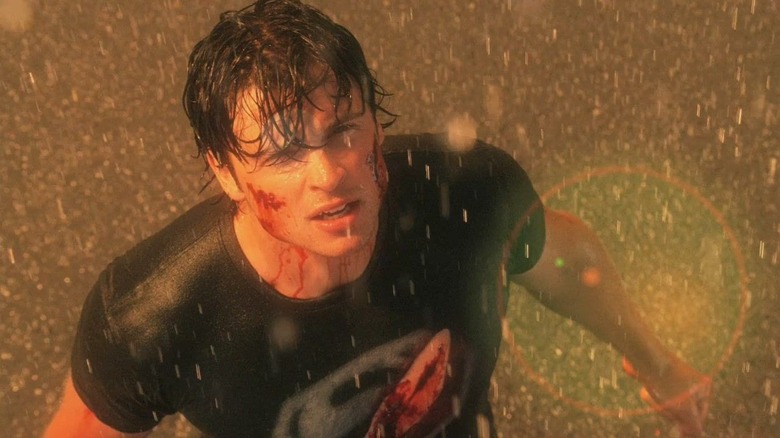
The series: Smallville
Where you can stream it: Hulu
Once upon a time, live-action superhero shows were few and far between. There had been a few attempts at bringing the story of Superman to television, but the first to feature a young Clark Kent as he first realizes his Superman identity was "Smallville," which premiered in 2001 on The WB (which later became The CW). The series starred Tom Welling as Clark, who befriended Lex Luthor (Michael Rosenbaum) before the two grew apart and eventually became mortal enemies. It's a fun series about teens and young adults that manages to be fun enough to hook older audiences, too, even if they're not big Superman fans.
"Smallville" helped usher in the earliest parts of the superhero boom of the 2000s, kicking off the beginning of what would eventually become The CW's massive Arrowverse. It was a game-changer that featured some inventive ways of bringing comic book storylines to the small screen and had some great performances, especially from Rosenbaum as the best live-action Luthor to date. There's a direct line from "Smallville" to "Titans," so if you haven't checked it out, now is the time.
Centurion Shows British History Before The Last Kingdom
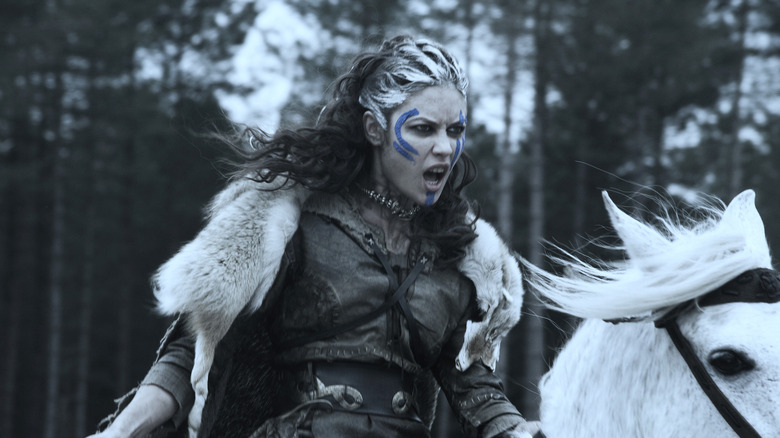
The movie: "Centurion"
Where you can watch it: Prime Video, Peacock, Roku, Tubi, and Vudu
"Centurion" is another violent historical epic set on the island of Great Britain, though it takes place about a thousand years earlier than either "The Northman" or "Seven Kings Must Die." The film follows a Roman officer named Quintus Dias (Michael Fassbender), who is captured by a clan of Pict warriors. He's rescued by a legion of Roman centurions who are looking to kill the Pictish leader, and he joins them. They end up far behind enemy lines when the majority of them are slaughtered, and they must survive both the fierce wilderness and the furious Picts. It's a grueling story that has moments of real beauty, especially with a subplot that involves a healer woman (Imogen Poots) who nurses Dias back to health.
There aren't a ton of movies about the Picts, but they were just as fierce and fascinating as the Vikings, and "Centurion" shows them as complex and courageous warriors. It's not the most historically accurate thing, but it's nice to look at, and Liam Cunningham (the Onion Knight from "Game of Thrones") gets to play a grumpy officer, which is automatically a bonus.
Animorphs Was Willing To Get Weird
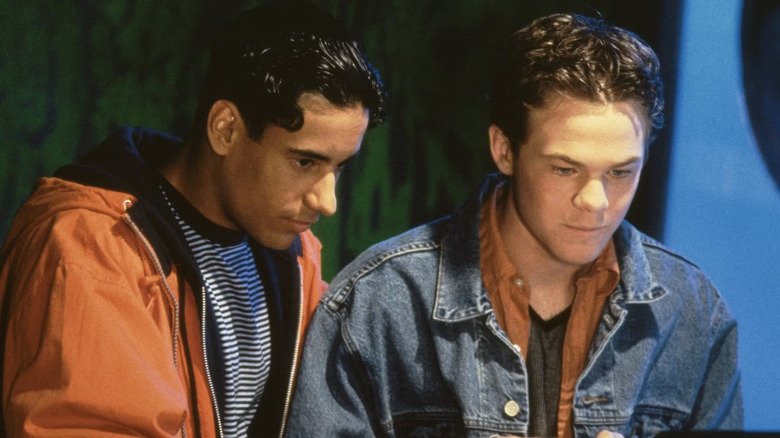
The series: "Animorphs"
Where you can stream it: Prime Video
Hear me out on this one: "Titans" is a series about a group of young people with extraordinary powers fighting forces beyond our comprehension. "Animorphs" is a series about a group of young people with extraordinary powers fighting forces beyond our comprehension. It's just a lot older, cheesier, and somehow even weirder. Based on the novel series by K.A. Applegate, "Animorphs" aired on Nickelodeon and followed five teenagers who found a crashed alien spaceship and were given the ability to shapeshift into any animal they had physically touched. It turns out there's a full-scale alien invasion on Earth with slug-like aliens called the Yeerk that crawl into people's brains and drive them, creating a real "Invasion of the Body Snatchers"-style problem for the teens.
What makes "Animorphs" so fascinating is that it is incredibly dark and adult given its target audience, and the series executives were willing to get as weird as the source material, with several species of goofy-looking CGI-aliens, some absolutely horrifying transformation sequences, and the inherent weirdness of being a teenager in charge of saving the world and being able to turn into a Golden Retriever. "Animorphs" was honestly way ahead of its time, and helped create an entire generation of kids who would go on to love seriously strange science fiction.
Read this next: 14 Underrated Fantasy Shows That Deserve Your Attention
The post The Weekly Watchlist: Seven Kings Must Die and Titans Season 4 Bring the Action (April 10, 2023) appeared first on /Film.





.jpg)


